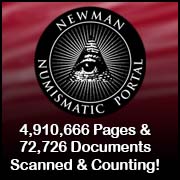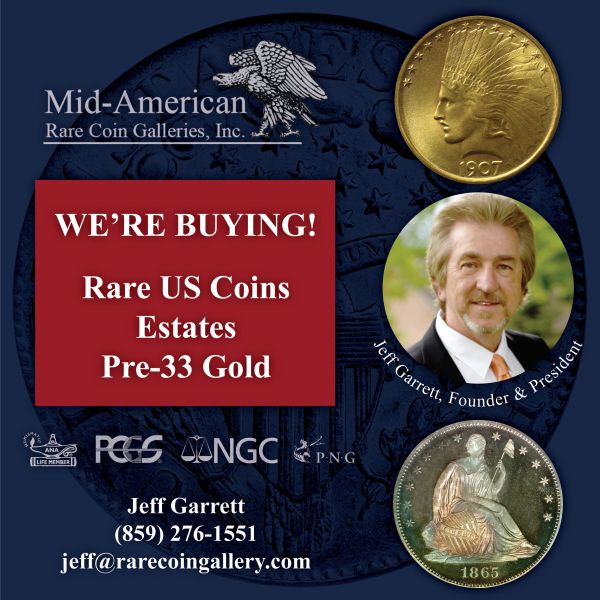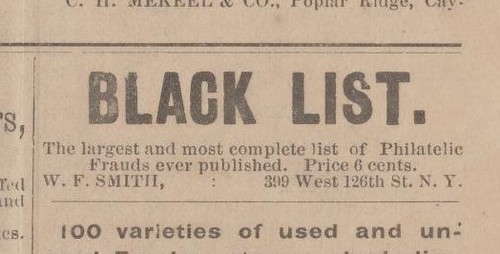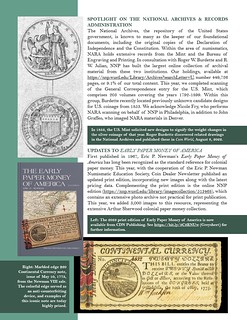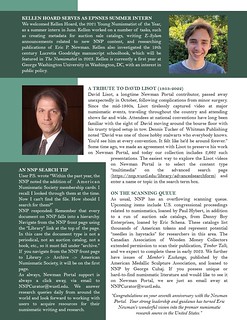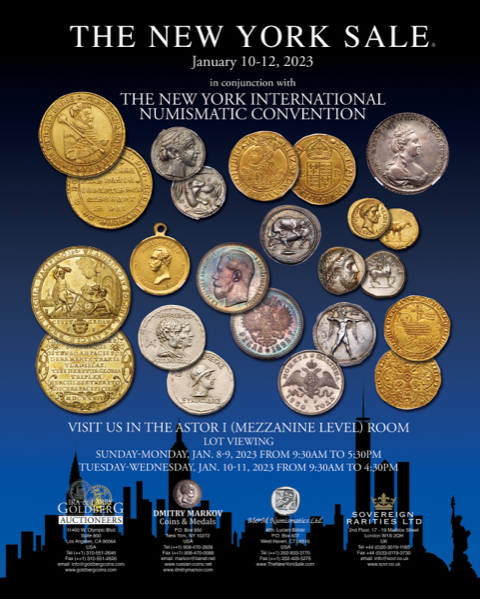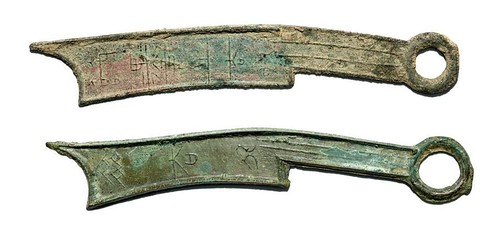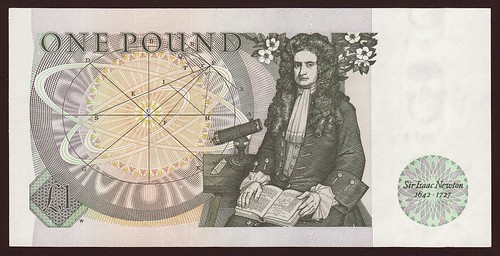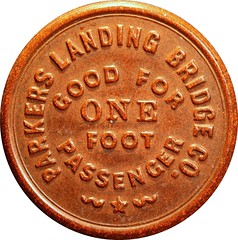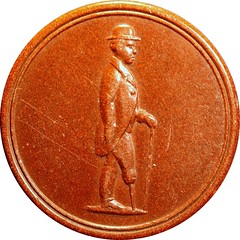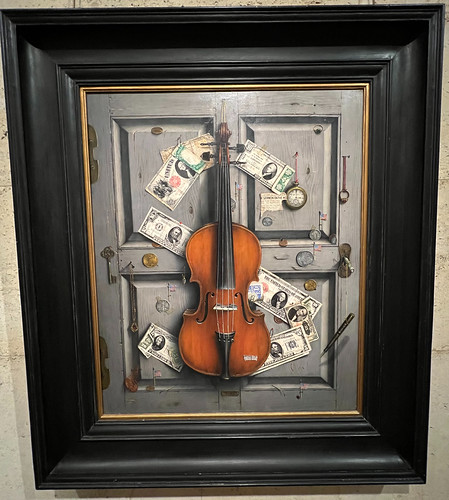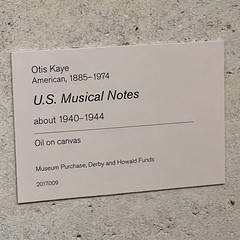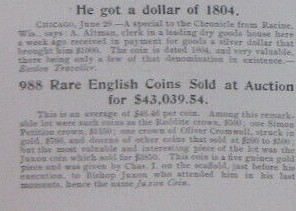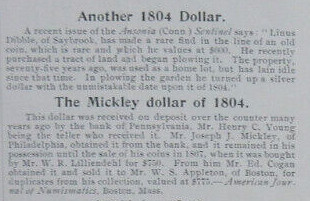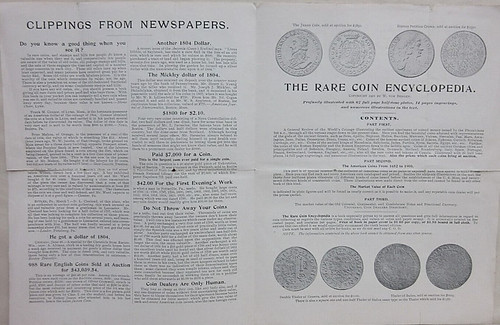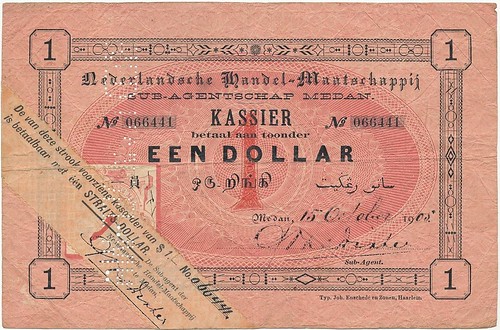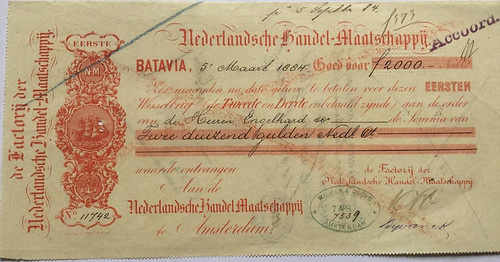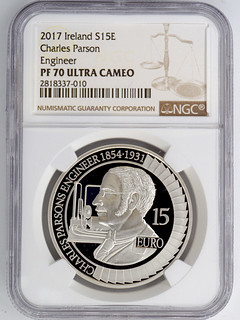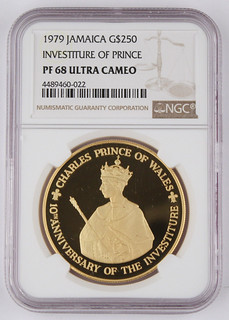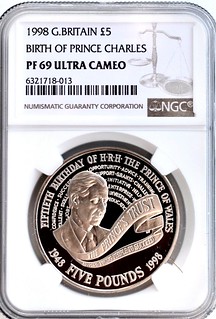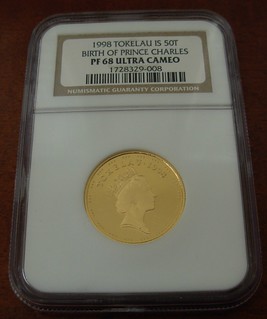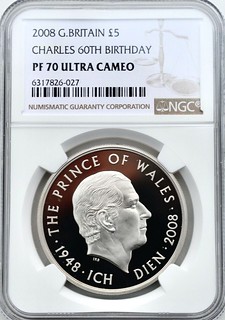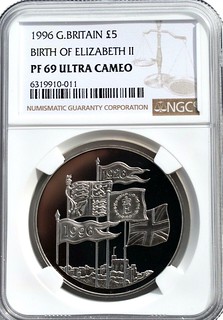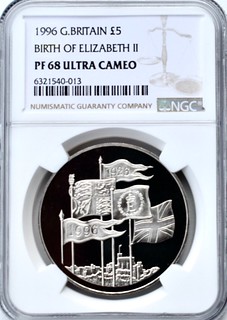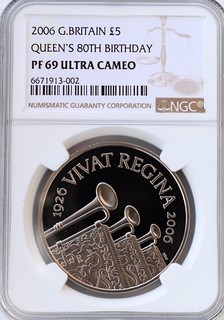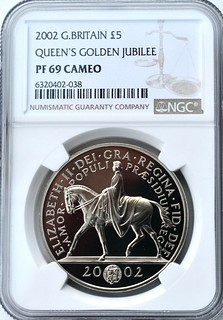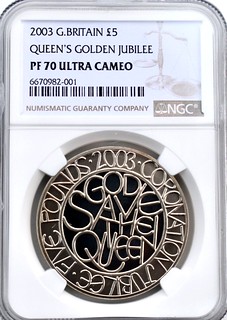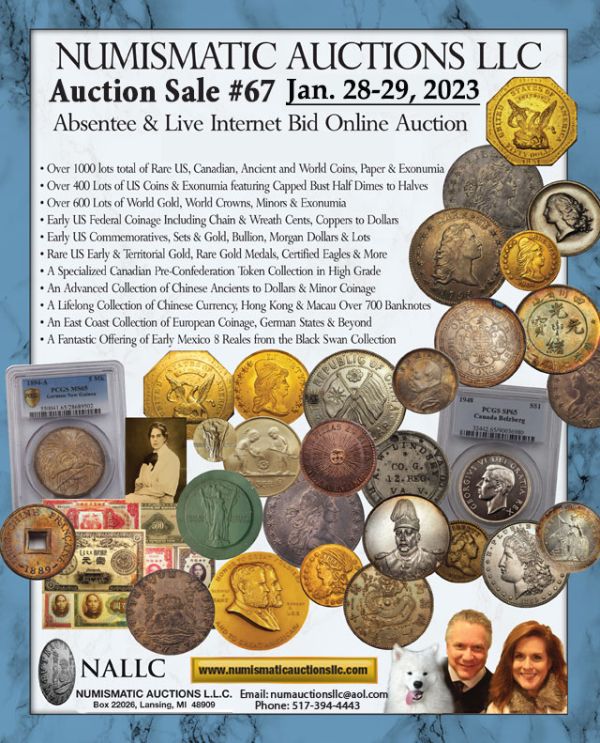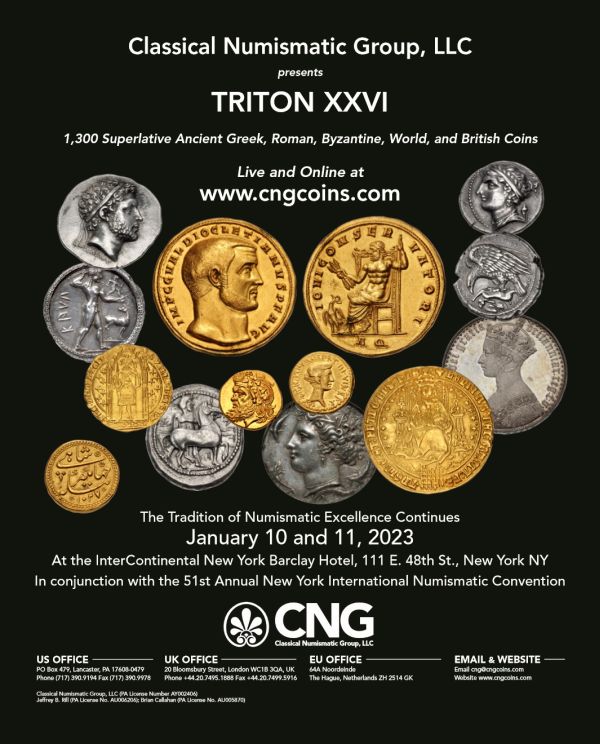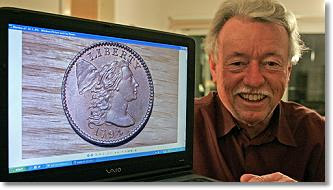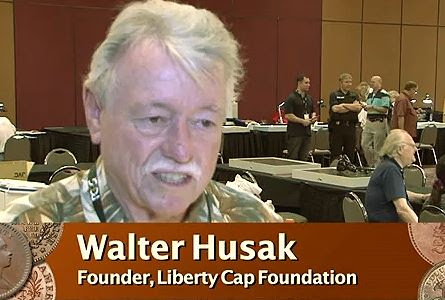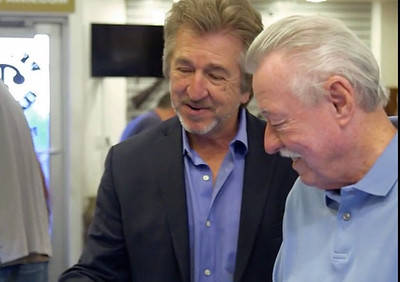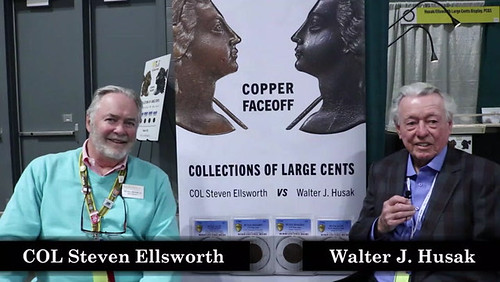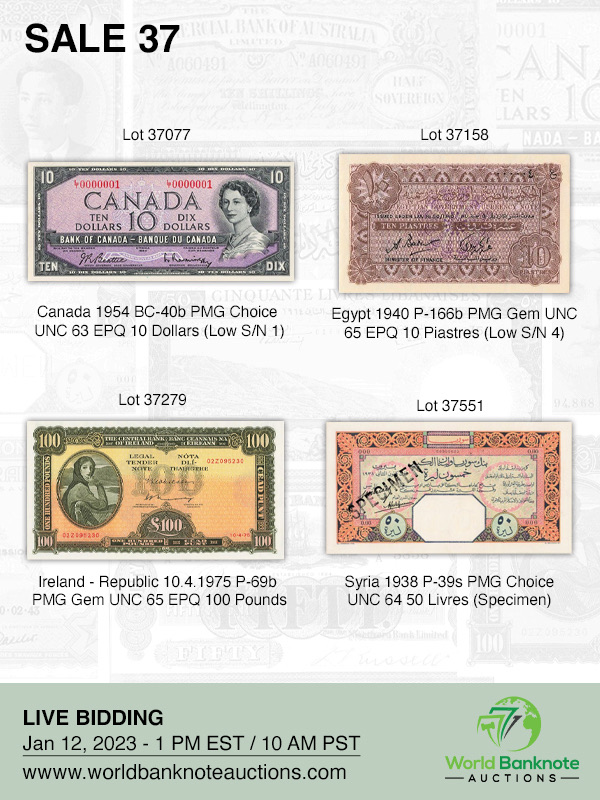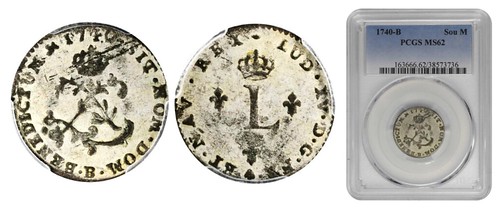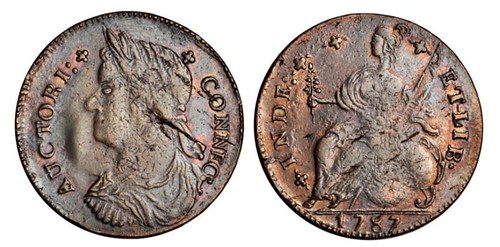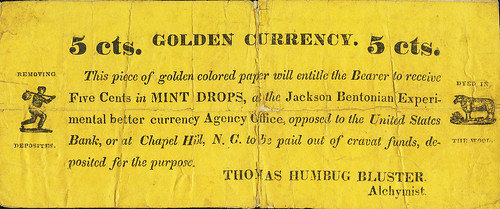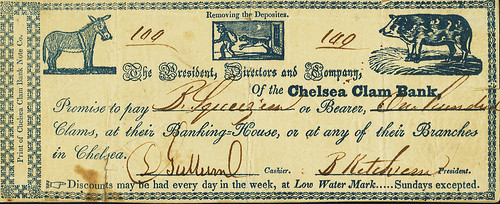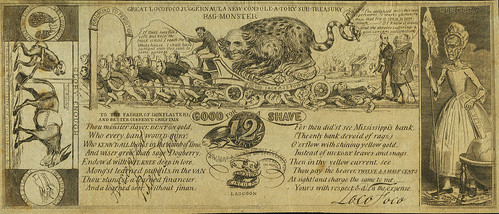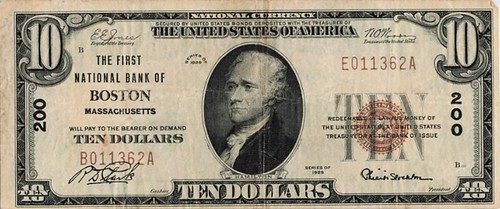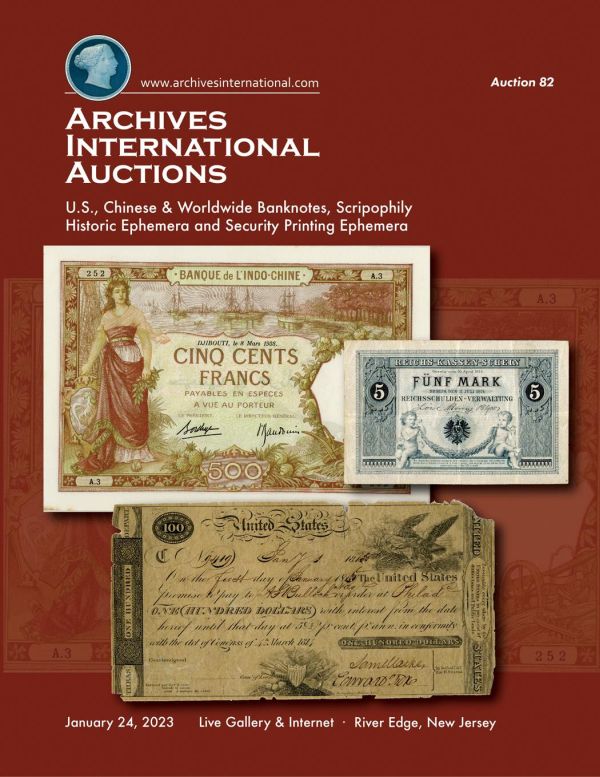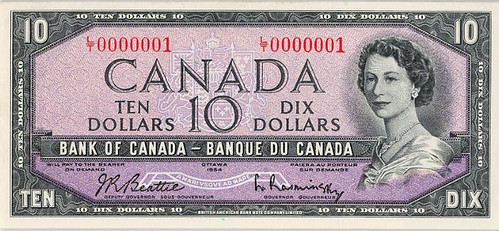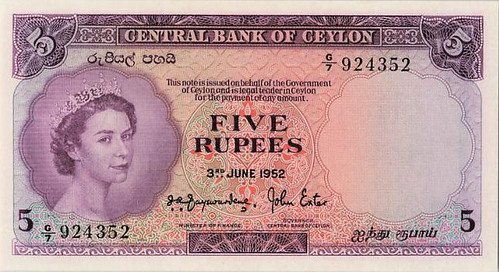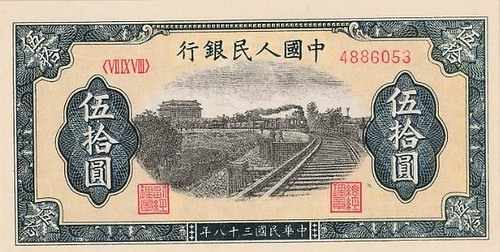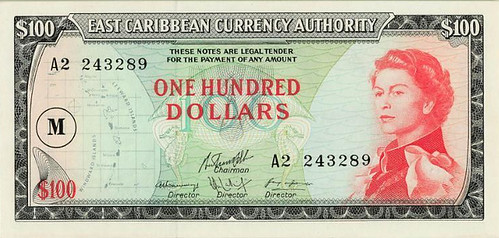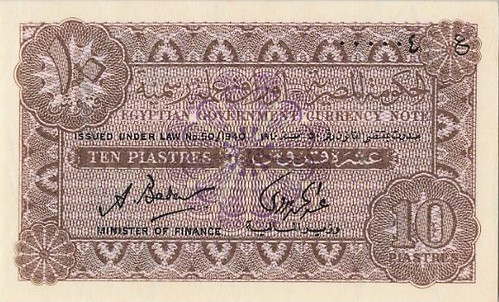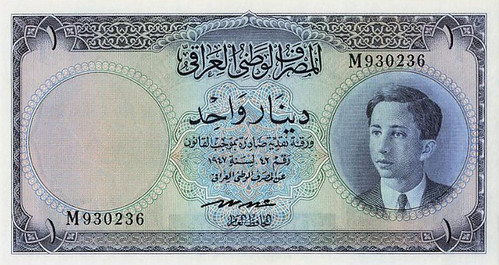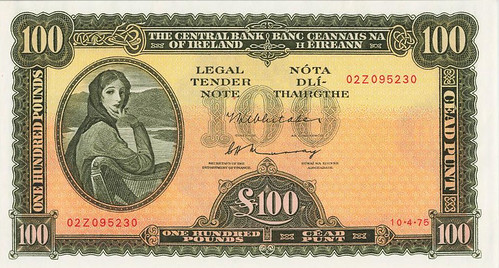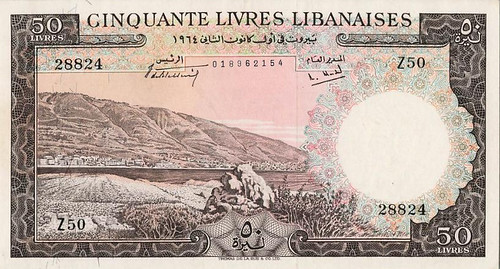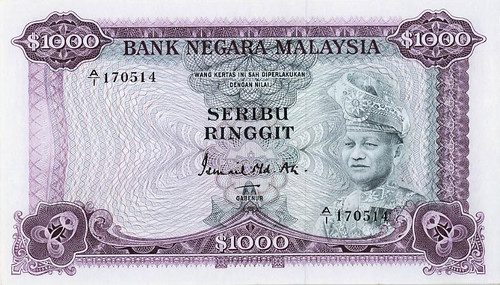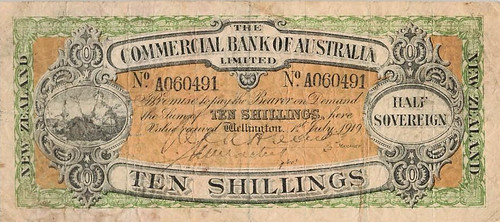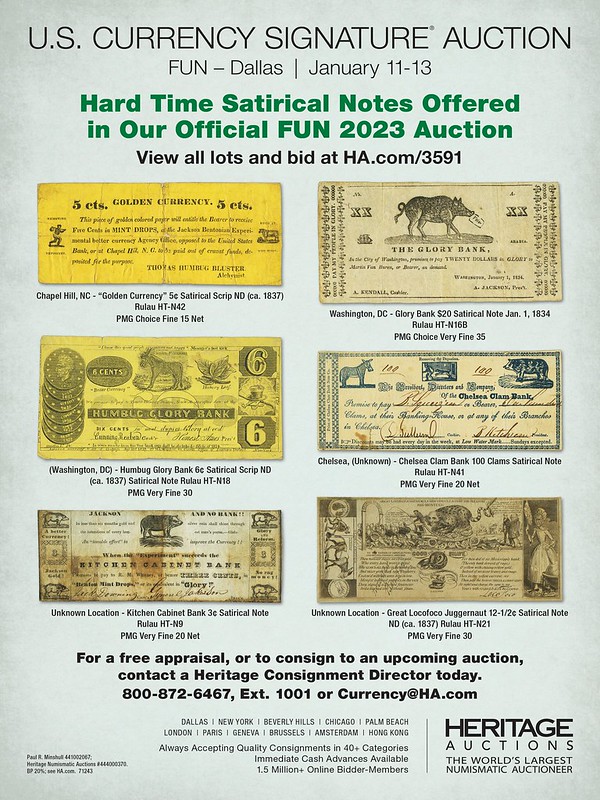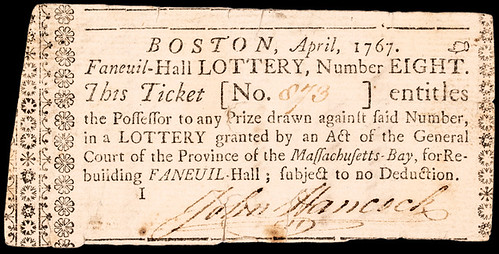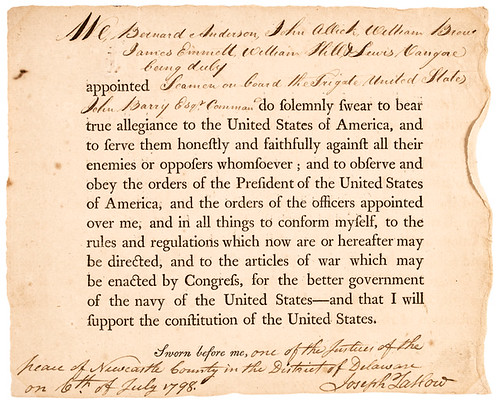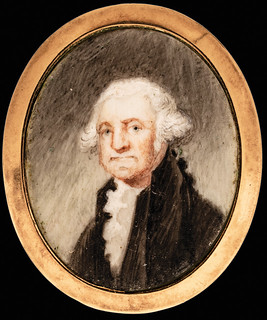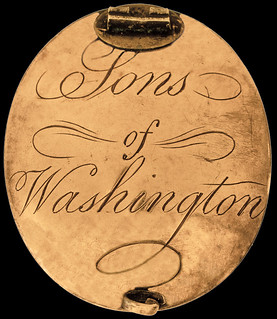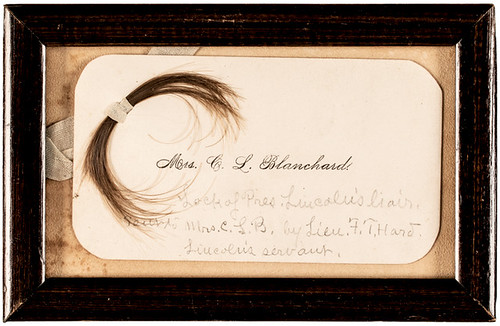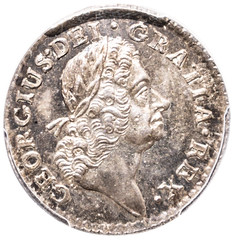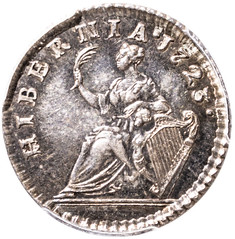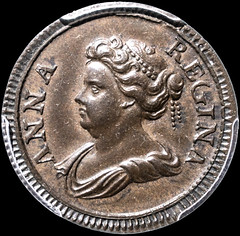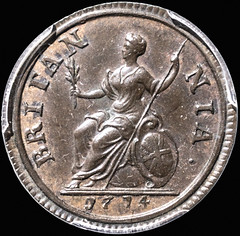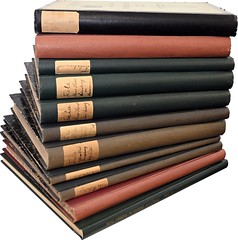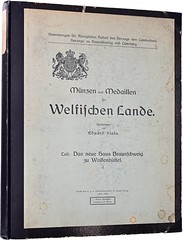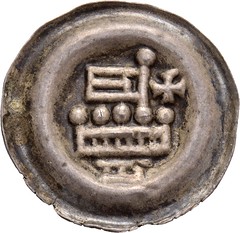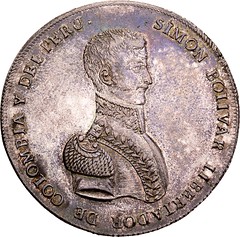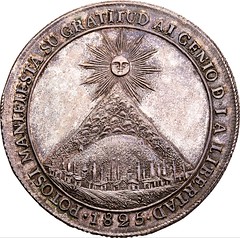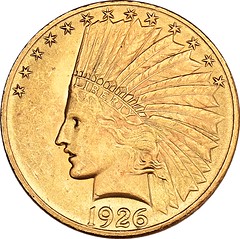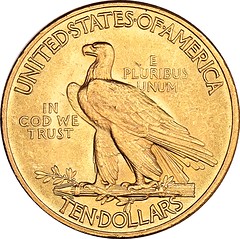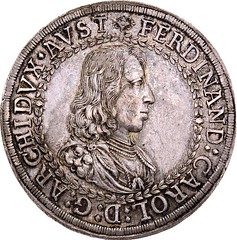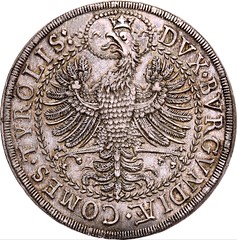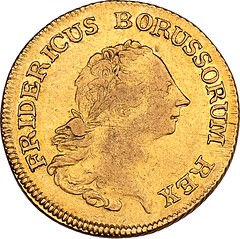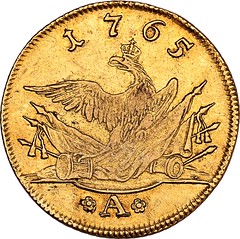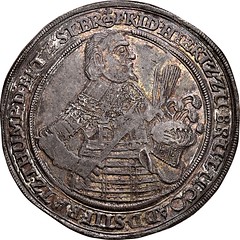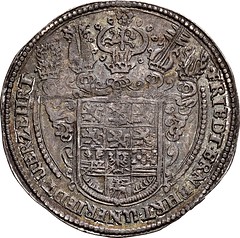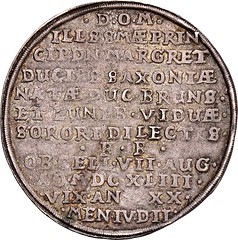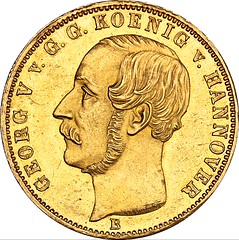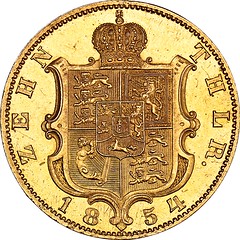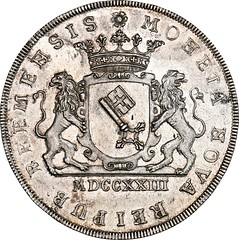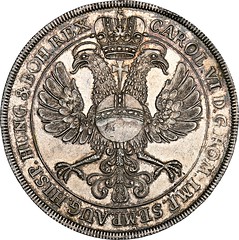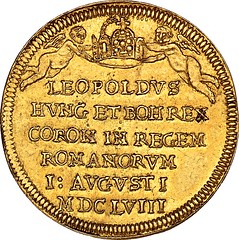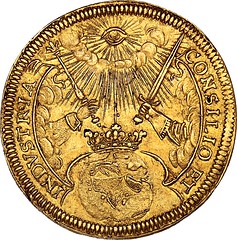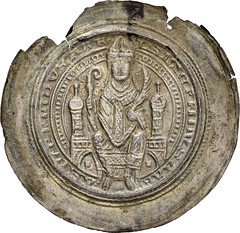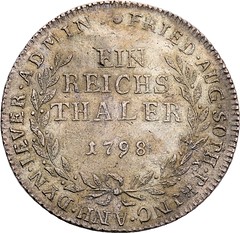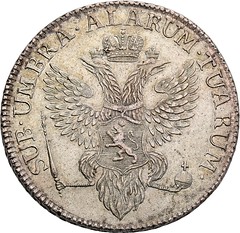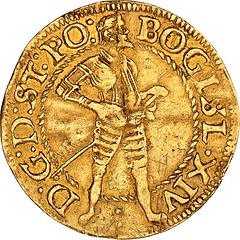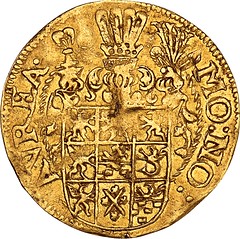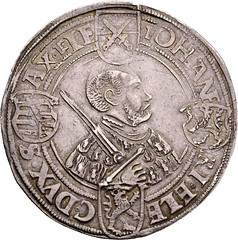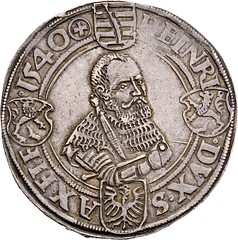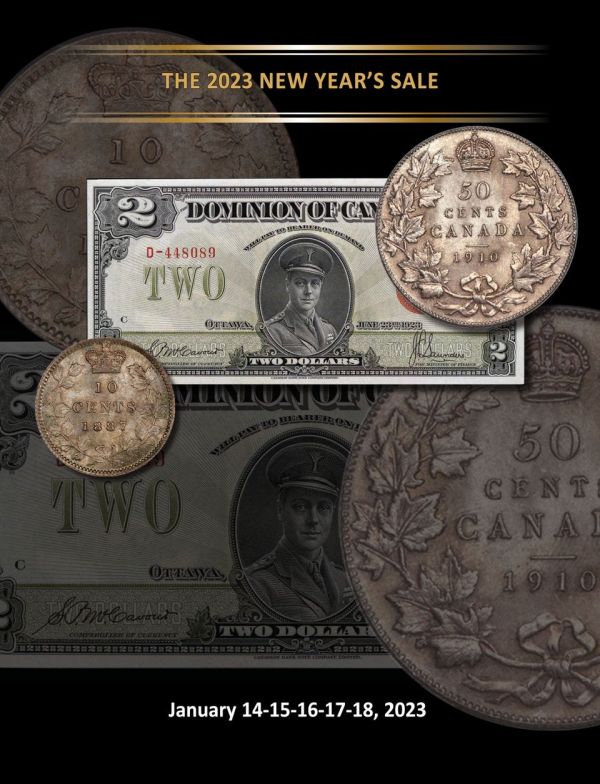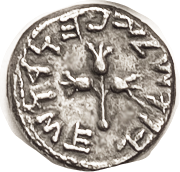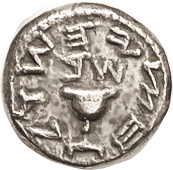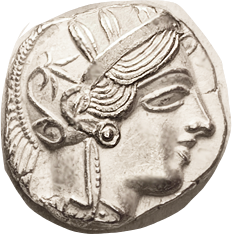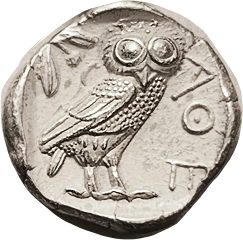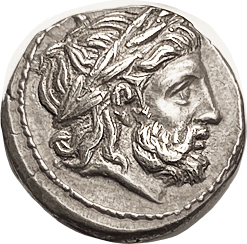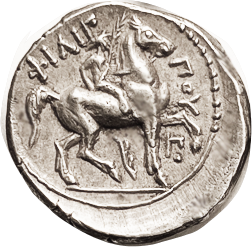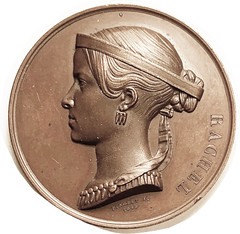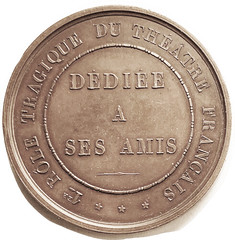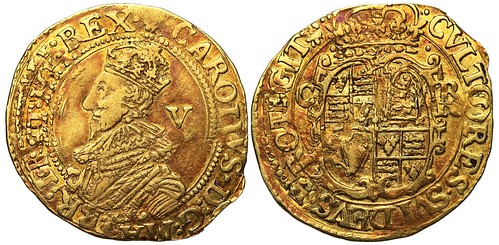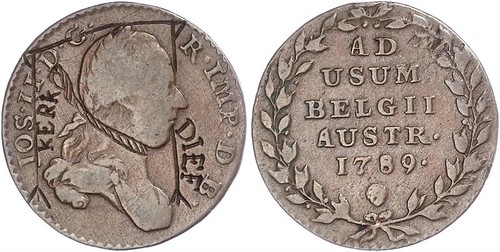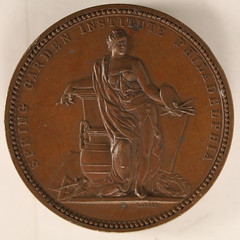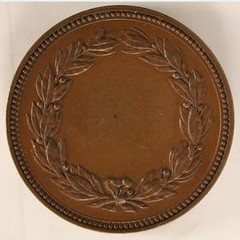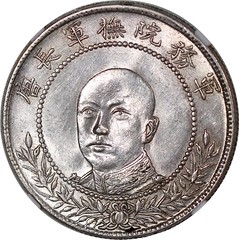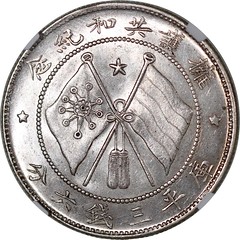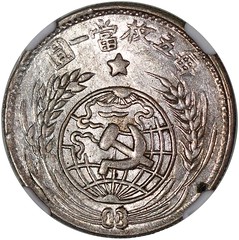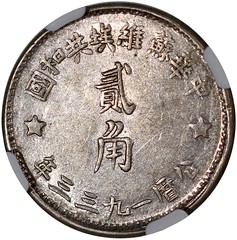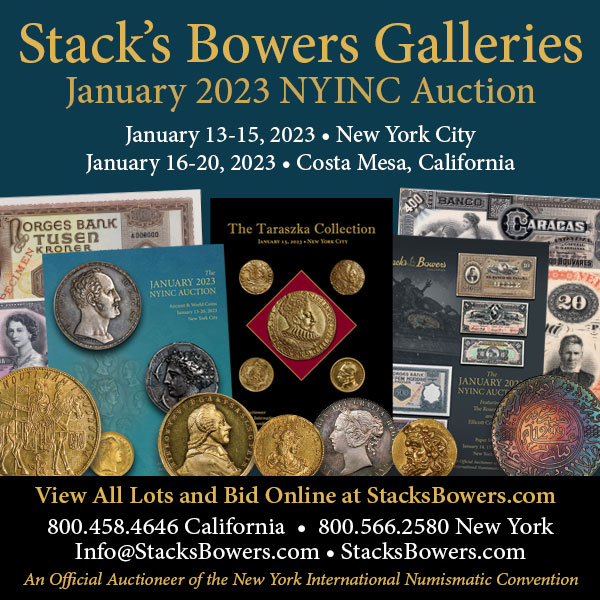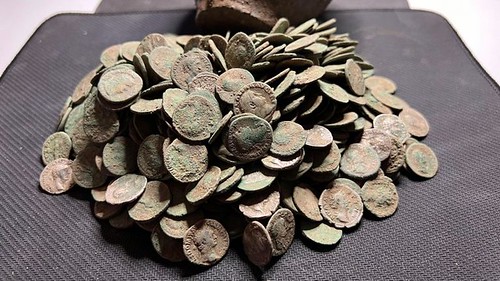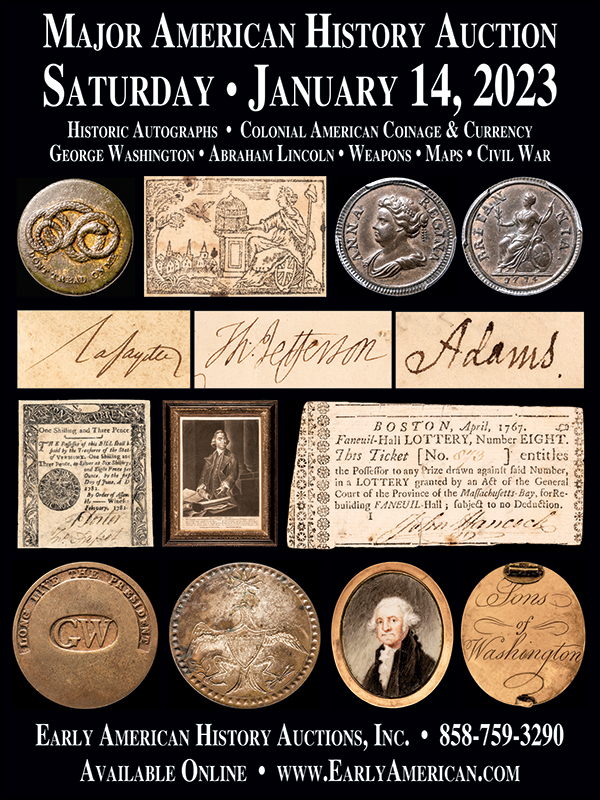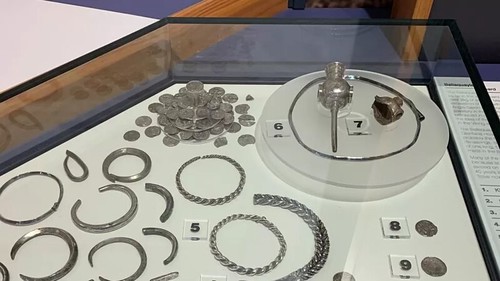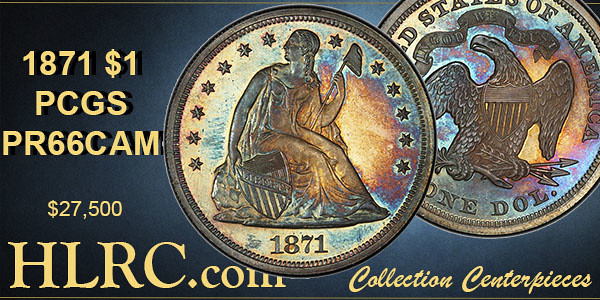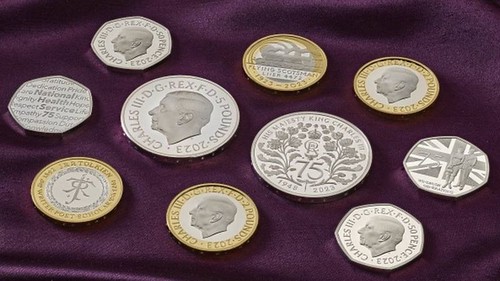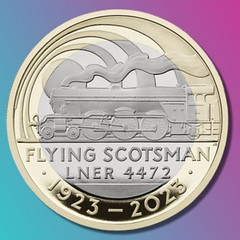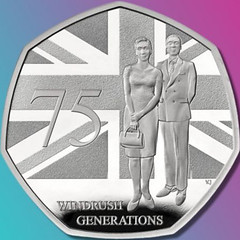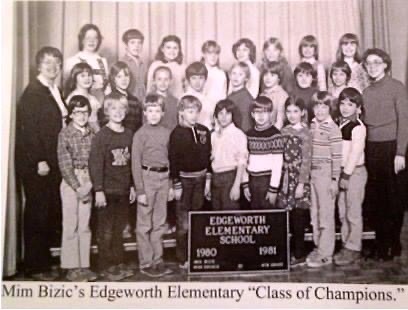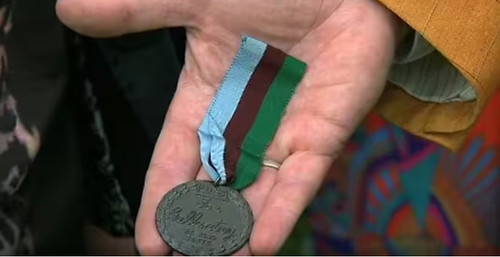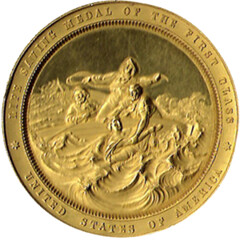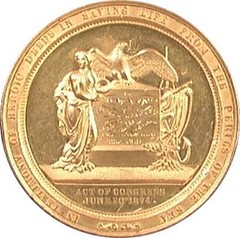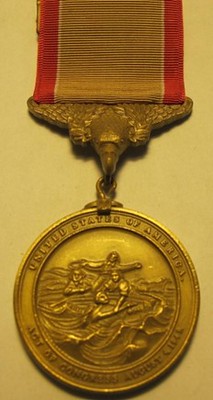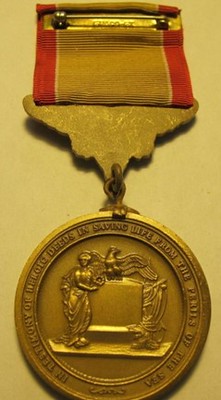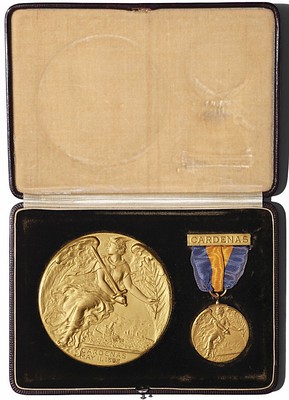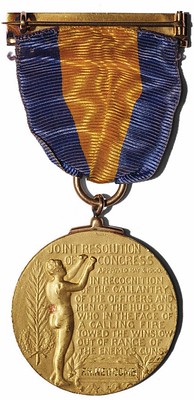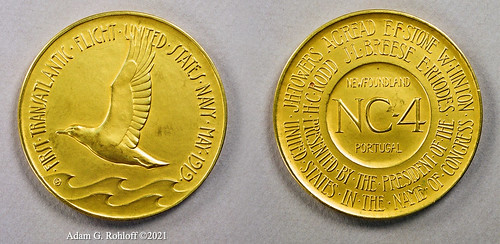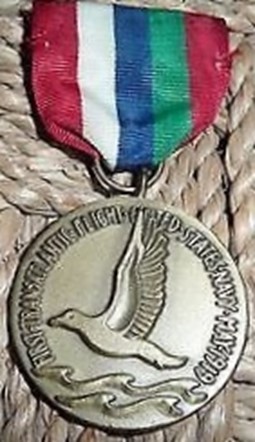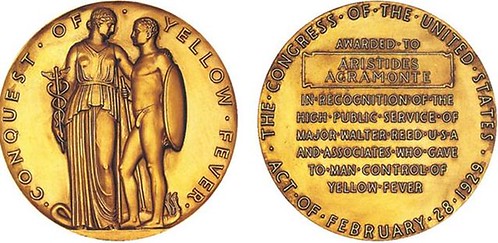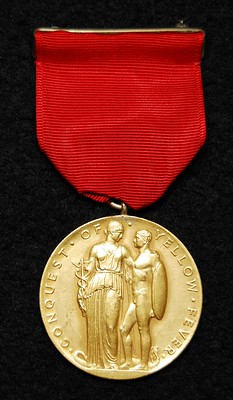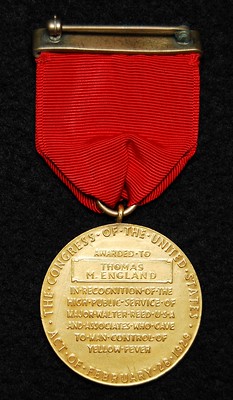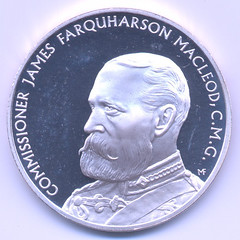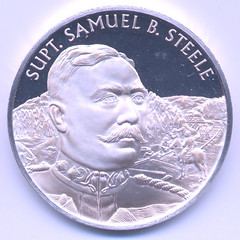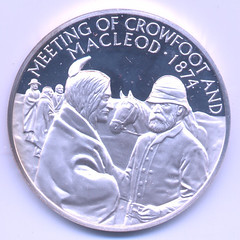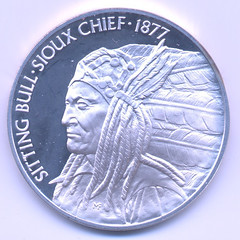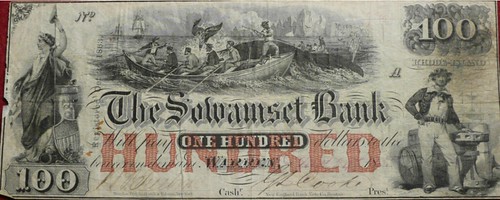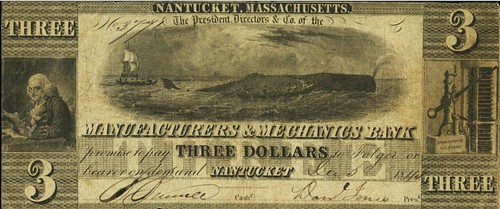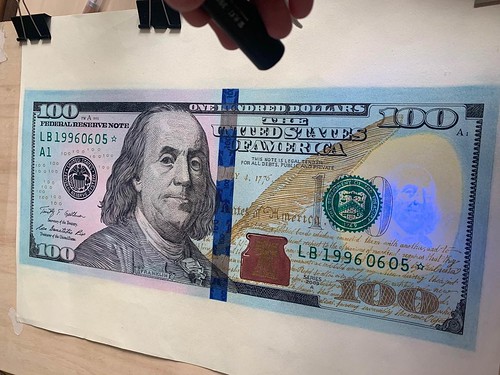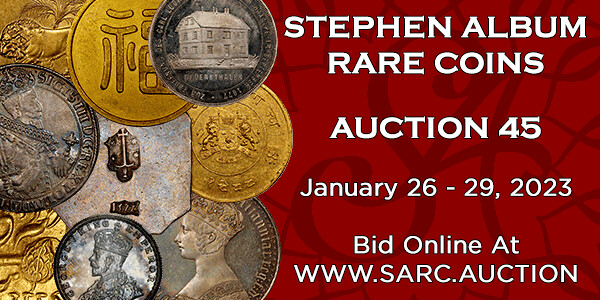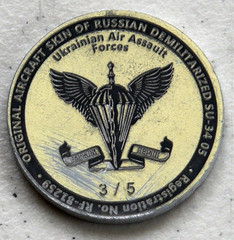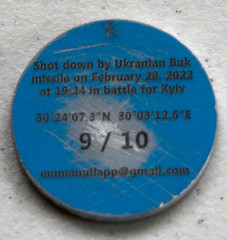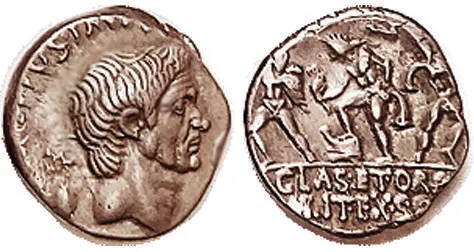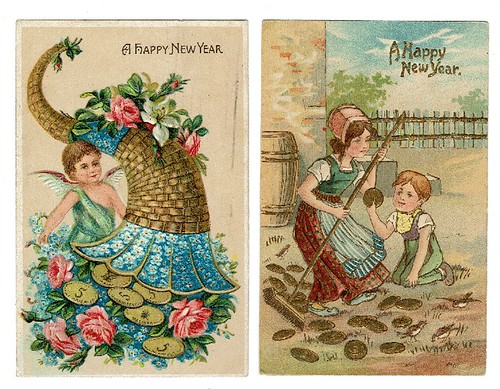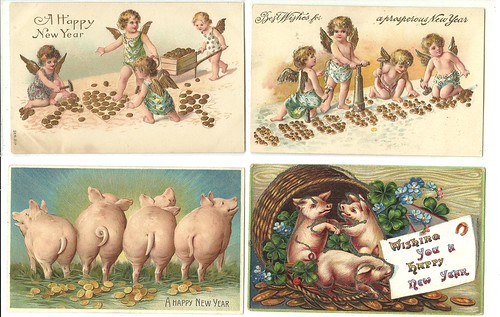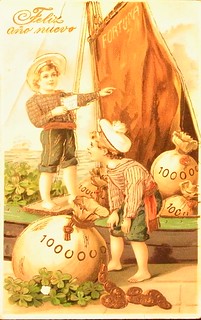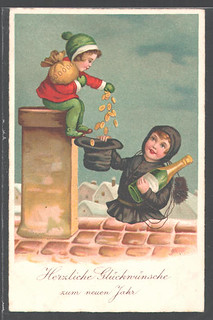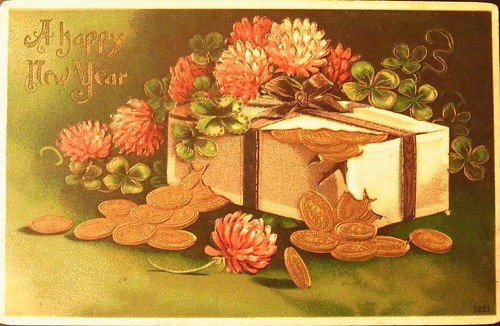
Visit our NBS Sponsors




About UsThe Numismatic Bibliomania Society is a non-profit association devoted to the study and enjoyment of numismatic literature. For more information please see our web site at coinbooks.org SubscriptionsThose wishing to become new E-Sylum subscribers (or wishing to Unsubscribe) can go to the following web page link MembershipThere is a membership application available on the web site Membership Application To join, print the application and return it with your check to the address printed on the application. Print/Digital membership is $40 to addresses in the U.S., and $60 elsewhere. A digital-only membership is available for $25. For those without web access, write to: Charles Heck, Treasurer AsylumFor Asylum mailing address changes and other membership questions, contact Chuck at this email address: treasurer@coinbooks.org SubmissionsTo submit items for publication in The E-Sylum, write to the Editor at this address: whomren@gmail.com BUY THE BOOK BEFORE THE COINSale CalendarWatch here for updates! |
- WAYNE'S WORDS: THE E-SYLUM JANUARY 1, 2023
- NNP ADDS THE GRANITE STATE PHILATELIST
- NEWMAN NUMISMATIC PORTAL 2022 REPORT
- VIDEO: HENRY EVANSON
- FORBES REVIEWS SMITHSONIAN MONEY EXHIBITS
- MORE BORN OR DIED ON CHRISTMAS
- NOTES FROM E-SYLUM READERS: JANUARY 1, 2023
- DUTCH TRADING CO. BANKNOTE INFO SOUGHT
- SLOPPY SLAB LABELS
- PNG ACCEPTING 2023 AWARD NOMINATIONS
- VOCABULARY TERM: MEDALLION
- PAULINE PAULING EMMETT (1902-2003)
- MORE ON WALT HUSAK
- ROSA AMERICANA FIXED PRICE LIST #23 SELECTIONS
- PANIC OF 1837 SATIRICAL BANKNOTES
- NATIONAL BANKNOTE WITH MISMATCHED PREFIX
- WORLD BANKNOTE AUCTIONS SALE 37
- EARLY AMERICAN JANUARY 2023 SALE HIGHLIGHTS
- KEUNKER SALE 381 HIGHLIGHTS
- FRANK S. ROBINSON 120TH AUCTION
- NUMISMATIC NUGGETS: JANUARY 1, 2023
- ROMAN COINS UNEARTHED IN ROMANIA
- MANX MUSEUM BALLAQUALYE HOARD EXHIBIT
- NEW COMMEMORATIVE CHARLES III COINS
- WHEN MIMI GAVE WOZ A HOBO NICKEL
- ANTIQUES ROADSHOW APPRAISES DICKIN MEDAL
- WEARABLE CONGRESSIONAL GOLD MEDALS
- ROYAL CANADIAN MOUNTED POLICE MEDALS
- WHALING INDUSTRY ON NEW ENGLAND NOTES
- CHINESE ARTIST DRAWS BANKNOTES
- LOOSE CHANGE: JANUARY 1, 2023
- HAPPY NEW YEAR CARDS
Click here to read the thin version on the web
Click here to subscribe
Click here to access the complete archive
To comment or submit articles, reply to whomren@gmail.com
Content presented in The E-Sylum is not necessarily researched or independently fact-checked, and views expressed do not necessarily represent those of the Numismatic Bibliomania Society.
WAYNE'S WORDS: THE E-SYLUM JANUARY 1, 2023
 New subscribers this week include:
Allen Menke, courtesy of Harry Waterson;
Welcome aboard!
New subscribers this week include:
Allen Menke, courtesy of Harry Waterson;
Welcome aboard!
Thank you for reading The E-Sylum. If you enjoy it, please send me the email addresses of friends you think may enjoy it as well and I'll send them a subscription. Contact me at whomren@gmail.com anytime regarding your subscription, or questions, comments or suggestions about our content.
This week we open with updates from the Newman Numismatic Portal, National Numismatic Collection exhibits, notes from E-Sylum readers, and more.
Other topics this week include Dutch Trading Company banknotes, sloppy slab labels, medallions, SIN founder Pauline Pauling Emmett, Walt Husak, sale highlights, the Royal Mint commemoratives, Dickin medals, Congressional gold medals, and whaling on banknotes.
To learn more about Henry Evanson, one-foot passengers, 1804 dollar news, the Queen's Golden Jubilee, PNG awards, Hard Times satirical banknotes, the Faneuil-Hall lottery, coins and medals of the Welf lands, uncirculated 1909-S VDBs, the Flying Scotsman, Steve Wosniak's Hobo Nickel, most expensive pigeon, read on. Have a great week, everyone!
Wayne Homren
Editor, The E-Sylum
NNP ADDS THE GRANITE STATE PHILATELIST
The latest addition to the Newman Numismatic Portal is The Granite State Philatelist. Project Coordinator Len Augsburger provided the following report. -Editor
Courtesy of Neal Musante, a number of issues of the The Granite State Philatelist have been added to Newman Portal. Although primarily philatelic, the masthead proclaimed a devotion to Stamps, Coins and Curiosities.
In addition to covering stamps, the publisher John H. Hubbard issued a numismatic prices paid for
list and solicited rare coins from the public. Hubbard further carried numismatic auction announcements and reported sale results.
Produced in Laconia, NH, Hubbard notes in the September 1883 issue that the coin dealer Lyman Low of New York would accept subscriptions to the The Granite State Philatelist at his 838 Broadway storefront. This suggests some cooperative relationship between Low and Hubbard, who Low probably did not perceive as much of a competitive threat. W. F. Greaney, a San Francisco dealer, advertised with Hubbard, which was perhaps the cheapest way of promoting a west coast numismatic enterprise on the eastern seaboard.
The publication was short lived; Remy Bourne's American Numismatic Periodicals 1860-1960 notes 26 issues in 3 volumes, 1882-1884.
Image: A listing of philatelic frauds is offered in the September 1883 The Granite State Philatelist
Link to the The Granite State Philatelist:
https://archive.org/details/newmannumismatic?query=granite+state+philatelist&sort=-publicdate
NEWMAN NUMISMATIC PORTAL 2022 REPORT
It's been an honor and a pleasure to be associated with the Newman Numismatic Portal since its inception. My contributions as a part-time consultant are small compared to the efforts of the core staff highlighted in the 2022 Annual Report, which has just been published. Can you imagine nearly five million pages of numismatic information? If you haven't visited the portal lately, you haven't visited the portal. Here's an excerpt from the report with a complete version linked below. -Editor
NEWMAN PORTAL COLLECTION APPROACHES FIVE MILLION DIGITIZED PAGES
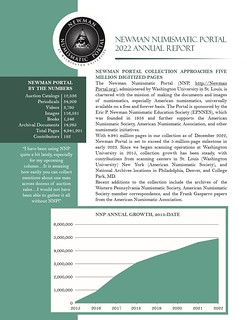 The Newman Numismatic Portal (NNP, http://Newman
Portal.org), administered by Washington University in St. Louis, is
chartered with the mission of making the documents and images
of numismatics, especially American numismatics, universally
available on a free and forever basis. The Portal is sponsored by the
Eric P. Newman Numismatic Education Society (EPNNES), which
was founded in 1958 and further supports the American
Numismatic Society, American Numismatic Association, and other
numismatic initiatives.
The Newman Numismatic Portal (NNP, http://Newman
Portal.org), administered by Washington University in St. Louis, is
chartered with the mission of making the documents and images
of numismatics, especially American numismatics, universally
available on a free and forever basis. The Portal is sponsored by the
Eric P. Newman Numismatic Education Society (EPNNES), which
was founded in 1958 and further supports the American
Numismatic Society, American Numismatic Association, and other
numismatic initiatives.
With 4.941 million pages in our collection as of December 2022, Newman Portal is set to exceed the 5-million-page milestone in early 2023. Since we began scanning operations at Washington University in 2015, collection growth has been steady, with contributions from scanning centers in St. Louis (Washington University) New York (American Numismatic Society), and National Archives locations in Philadelphia, Denver, and College Park, MD.
Recent additions to the collection include the archives of the Western Pennsylvania Numismatic Society, American Numismatic Society member correspondence, and the Frank Gasparro papers from the American Numismatic Association.
SPOTLIGHT ON THE NATIONAL ARCHIVES & RECORDS ADMINISTRATION
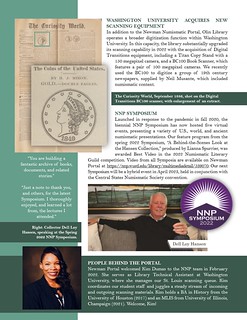 The National Archives, the repository of the United States
government, is known to many as the keeper of our foundational
documents, including the original copies of the Declaration of
Independence and the Constitution. Within the area of numismatics,
NARA holds extensive records from the Mint and the Bureau of
Engraving and Printing. In consultation with Roger W. Burdette and R.
W. Julian, NNP has built the largest online collection of archival
material from these two institutions.
The National Archives, the repository of the United States
government, is known to many as the keeper of our foundational
documents, including the original copies of the Declaration of
Independence and the Constitution. Within the area of numismatics,
NARA holds extensive records from the Mint and the Bureau of
Engraving and Printing. In consultation with Roger W. Burdette and R.
W. Julian, NNP has built the largest online collection of archival
material from these two institutions.
Our holdings, available at https://nnp.wustl.edu/Library/Archives?searchLetter=U, number 449,726 pages, or 9.1% of our total content. This year, we completed scanning of the General Correspondence entry for the U.S. Mint, which comprises 203 volumes covering the years 1792-1899. Within this group, Burdette recently located previously unknown candidate designs for U.S. coinage from 1853. We acknowledge Nicole Fry, who performs NARA scanning on behalf of NNP in Philadelphia, in addition to John Graffeo, who imaged NARA materials in Denver.
To read the complete report, see:
Newman Portal 2022 Report
(https://nnp.wustl.edu/library/book/621283)
VIDEO: HENRY EVANSON
The David Lisot Video Library on the Newman Numismatic Portal can be found at:
https://nnp.wustl.edu/library/multimediadetail/522852
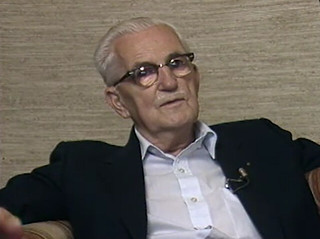 We highlight one of his videos each week in The E-Sylum.
Here's one from 1986 with Motion Picture operator Henry Evanson of Boston, who joined the ANA in 1929 and speaks about coin collecting in the Great Depression. He ran a mail order business through Numismatist ads and built three collections of U.S. dimes from 1796-date. He knew dealer B. Max Mehl. In 1933 he bought 1,500 uncirculated 1909-S VDB cents for 25 cents apiece and sold the group for 35 cents apiece. Bibliophiles will appreciate his advice that
old numismatic literature is priceless.
-Editor
We highlight one of his videos each week in The E-Sylum.
Here's one from 1986 with Motion Picture operator Henry Evanson of Boston, who joined the ANA in 1929 and speaks about coin collecting in the Great Depression. He ran a mail order business through Numismatist ads and built three collections of U.S. dimes from 1796-date. He knew dealer B. Max Mehl. In 1933 he bought 1,500 uncirculated 1909-S VDB cents for 25 cents apiece and sold the group for 35 cents apiece. Bibliophiles will appreciate his advice that
old numismatic literature is priceless.
-Editor
ANA Numismatic Personality: Henry Evanson
To watch the complete video, see:
https://nnp.wustl.edu/library/book/557352
FORBES REVIEWS SMITHSONIAN MONEY EXHIBITS
Forbes magazine published a nice review of the Value of Money and Really BIG Money exhibits from the National Numismatic Collection at the Smithsonian. Here's an excerpt, but see the complete article online for more. And check out the exhibit when you're in town! -Editor
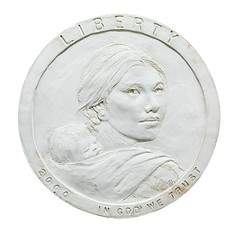 Before declaring independence on July 9, 2011, becoming the world's youngest officially recognized nation-state, the Republic of South Sudan selected a flag, an anthem, and a currency. Within a week of secession, the South Sudanese pound was in circulation, featuring a portrait of the deceased revolutionary leader John Garang de Mabior. By September, the currency of neighboring Sudan was no longer deemed legal tender.
Before declaring independence on July 9, 2011, becoming the world's youngest officially recognized nation-state, the Republic of South Sudan selected a flag, an anthem, and a currency. Within a week of secession, the South Sudanese pound was in circulation, featuring a portrait of the deceased revolutionary leader John Garang de Mabior. By September, the currency of neighboring Sudan was no longer deemed legal tender.
The Bank of South Sudan did not have to print banknotes, let alone pay the South African Mint to strike coins showing subjects of national pride ranging from giraffes to oil derricks. Neighboring Kenya already had years of experience running payments through a mobile banking system called M-Pesa, and the blockchain was starting to host a range of cryptocurrencies beyond bitcoin. The decision to follow tradition was political, equivalent to the choice Eritrea made in 1998, shortly after seceding from Ethiopia. Even more than a flag or anthem, a state currency broadcasts national identity.
South Sudanese and Eritrean banknotes are currently on view at the Smithsonian National Museum of American History alongside dozens of other coins and currencies from around the world and throughout history, in a permanent exhibition aptly called The Value of Money. Built on solid numismatic foundations, and expertly curated by Ellen Feingold, the exhibit only becomes more timely with each slip of the economy and freefall of cryptocurrency. Even more valuable is a new addendum opened this year for children coming of age at a time when they might never need to pocket a pound or a penny. Beneath their impressive surface luster, both exhibitions – and their comprehensive online complements – implicitly ask what money does when it isn't merely quantifying a financial transaction.
Some of the earliest money was made in China, where coins were cast in the shape of tools such as spades and knives. Inherently worthless, these token objects recollected real implements with actual utility value, items that had traditionally been bartered for livestock and land. The change to a make-believe version in the 7th century BCE increased commerce by easing exchange – i.e., friction was reduced by lightning the load – but these coins reminded people at every trade that money was merely symbolic. Well represented in the Smithsonian collection, knife and spade money arguably countered the abstraction of wealth and the concomitant distortion of values.
In the Near East, money evolved independently, taking an entirely different trajectory. Around the same time that China was casting miniature tools in bronze, the kingdom of Lydia (located in modern Turkey) started striking coins in a natural alloy of silver and gold. Previously most transactions in the region had involved the exchange of bullion, which required weighing and assaying with every exchange. With the stater and its fractions – soon struck in pure gold or silver instead of alloyed electrum – Lydia standardized monetary units while also certifying authenticity.
Lydia was defeated by the Achaemenid Empire in 547 BCE. Learning metallurgy and minting from their new subjects, the Achaemenid kings started to issue their own coinage in precious metals with one signal difference: In contrast to the lions and bulls gracing Lydian staters, the new sigloi portrayed the monarch, depicting him as a kneeling archer with drawn bow. Wherever the Achaemenid currency spread, it carried an implicit threat of colonization.
Ever since, most coinage has been struck with subtexts ranging from political propaganda to visions of the future. The Value of Money includes an Athenian tetradrachm, which became the de facto currency throughout most of ancient Greece in the 4th century BCE, radiating the prestige of the city and spreading the glory of its patron deity with a spectacular portrait of a helmeted Athena. The exhibition also includes a Colonial American cent from 1786 prominently displaying the Latin motto E Pluribus Unum (Out of Many, One
), reinforcing the call to common purpose articulated by the Founding Fathers. And a map of Europe appears on a euro coin dating from the year 2000, charting an alliance that was still in the making, suggestively seeking to connect the continent economically.
To read the complete article, see:
What Makes Crypto Such A Poor Substitute For Cash? The Smithsonian Offers Some Priceless Insights.
(https://www.forbes.com/sites/jonathonkeats/2022/12/21/what-makes-crypto-such-a-poor-substitute-for-cash-the-smithsonian-offers-some-priceless-insights/)
THE BOOK BAZARRE
MORE BORN OR DIED ON CHRISTMAS
Last week Pete Smith submitted a compilation of American numismatists who were either born on or passed away on Christmas. Here are some reader additions. -Editor
Mark Borckardt writes:
"Robert Miller, Sr. – born on Christmas – colonial collector and dealer
"And this one is a stretch:
James Carl Borckardt (9/28/1956-12/25/1974) – brother of numismatist Mark Borckardt."
Steve Feller writes:
"To the list of numismatists who were born or died on Christmas I add Isaac Newton, yes the scientist Newton who also served as Master of the Royal Mint. He was born Christmas day of 1642.
"It is also interesting to note that it was Christmas Day then but it was under the old calendar. By the modern calendar it was January, 4, 1643. Still, based on the calendar in use it was Christmas!"
To read the earlier E-Sylum article, see:
NUMISMATISTS BORN OR DIED ON CHRISTMAS
(https://www.coinbooks.org/v25/esylum_v25n52a16.html)
NOTES FROM E-SYLUM READERS: JANUARY 1, 2023
Good For One Foot Passenger
Yosef Sa'ar of Elat on the Red Sea writes:
"I liked your post of the hard rubber Oil City bridge token in last week's E-Sylum. Thought you might like the humor in the similar piece from Parker, Pennsylvania. In those days it was Parker's Landing."
That's great! Thanks. -Editor
To read the earlier E-Sylum article, see:
NUMISMATIC NUGGETS: DECEMBER 25, 2022 : Oil City Transportation Token
(https://www.coinbooks.org/v25/esylum_v25n52a20.html)
Israeli Diamond Industry Medal
E-Sylum advertiser Steve writes:
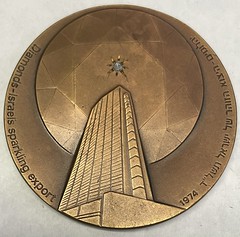 "In relation to the article about 'NFT Tokens With Precious Stones' some of your readers will know that a medal was produced by the Israel Government Coins and Medals Corporation commemorating the Israeli Diamond Industry (1974), with an imbedded diamond (as shown atop the building)."
"In relation to the article about 'NFT Tokens With Precious Stones' some of your readers will know that a medal was produced by the Israel Government Coins and Medals Corporation commemorating the Israeli Diamond Industry (1974), with an imbedded diamond (as shown atop the building)."
Nice. See Steve and the medal at Winter FUN (#1 Money Man Table 1059). -Editor
To read the earlier E-Sylum article, see:
LOOSE CHANGE: DECEMBER 25, 2022 : NFT Tokens With Precious Stones
(https://www.coinbooks.org/v25/esylum_v25n52a26.html)
The Twelve Collecting Days of Christmas
Roger Siboni writes:
"Thank you again for all you tirelessly do to deliver one of my favorite weekly reads that gives my life some true balance from the Wall Street Journal, Barron's and Seeking Alpha!
"Once again you brought the biggest smile to my face with Adam Spikes' 12 Days of Christmas. Clever, topical, numismatic and pure sentimental joy which never goes out of style! If Alan (and before that David Pickup) wouldn't mind, I even think this is custom Christmas card worthy! "
Great idea! Thanks again to David and Adam for a nice holiday treat. -Editor
To read the earlier E-Sylum article, see:
THE TWELVE COLLECTING DAYS OF CHRISTMAS
(https://www.coinbooks.org/v25/esylum_v25n52a27.html)
A Note From Jim Duncan
Jim Duncan of New Zealand writes:
"Thank you for your tireless efforts over the past year to provide an E-Sylum every week, it's much appreciated."
You're welcome! It's always fun to work on, with such a great group of readers and contributors. Happy New Year! -Editor
John Igo, Numisma Reprint Information Sought
Dave Hirt writes:
"Looking thru my library, I have some questions for our great readers. The first is about an auction sale catalog, Sale of Coins, May 26 & 27,1881 by John Igo. I read a note that said that Igo absconded with the bidders' money after the sale. I have been trying to verify this. The fact that Igo only had this one sale, looks like it may have been true. However my catalog is very neatly priced in red ink. If Igo was leaving town, it seems strange that he would price a catalog. Can any of our readers supply information on this sale?
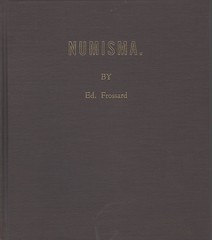 "My next question is on a reprint issued by literature dealers Money Tree, I believe in the 1980s. It is a hard bound copy of Ed Frossard's periodical, Numisma. My copy is marked #17 of 31 copies.
The title page does not list a date of publication. Can someone supply me with that date?"
"My next question is on a reprint issued by literature dealers Money Tree, I believe in the 1980s. It is a hard bound copy of Ed Frossard's periodical, Numisma. My copy is marked #17 of 31 copies.
The title page does not list a date of publication. Can someone supply me with that date?"
Both great questions. Can anyone help? I have a copy of the Numisma reprint as well, and it was immensely helpful in various research projects. My copy is stuffed with bookmarks. The spine lists Remy Bourne's Ramm Communications as well as Money Tree. An answer may lie in the Money tree house organ, Out on a Limb. -Editor
U.S. Musical Notes by Otis Kaye
Ed Hohertz writes:
"The July 12, 2020 issue of The E-Sylum reviews a book on the works of Otis Kaye. Below is a painting of his at the Columbus Museum of Art (Ohio)."
Very nice - thank you! See below for a link to the article, as well as Pete Smith's excellent biography of Kaye. -Editor
To read the earlier E-Sylum articles, see:
BOOK REVIEW: OTIS KAYE
(https://coinbooks.org/v23/esylum_v23n28a06.html)
OTIS KAYE (1885-1974)
(https://www.coinbooks.org/v25/esylum_v25n35a22.html)
Von Bergen Flyer Republishes 1804 Dollar Accounts
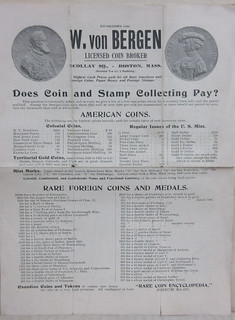 Carol Bastable writes:
Carol Bastable writes:
"I came across a listing on eBay and immediately thought of you and your readers. Note the interesting accounts of 1804 dollars on the back page of the circular."
Thanks. Here are closeups of the articles. -Editor
To read the complete lot description, see:
Vintage Early 1900s Coin Broker Dealer Advertisement for W. Von Bergen Boston MA
(https://www.ebay.com/sch/i.html)
DUTCH TRADING CO. BANKNOTE INFO SOUGHT
Adrian J. Lansen of The Netherlands is researching the banknotes of the Dutch Trading Company. Can anyone assist? -Editor
We are looking for information and images of the issues of the Nederlandsche Handel-Maatschappij (Dutch Trading Company) over the period 1824-1964. It concerns the cash orders of the Medan, Menado and Gorontalo sub agency: period 1888-1907. The banknotes of the Dutch Trading Society agency in Shanghai: period 1902 – 1946. Money bills, outside the Netherlands, of the Nederlandse Handel-Maatschappij, international worldwide: period 1824 - 1964. This information will be catalogued, described and will then be published in book form. Any information on this subject is very welcome.
A.J. Lansen en P. Plomp.
Information to : @ :
lansenkil@hotmail.nl
mailing address: A.J. Lansen Haanderik 94 3401 ET IJsselstein The Netherlands
A.J. Lansen: member of the: NKU, NKH, NKB, Dutch Royal Numismatic Society, ANA, ATMS.
SLOPPY SLAB LABELS
Ron Haller-Williams writes:
"As you must remember, there has been a lot of controversy about coin "coffins", with some people swearing by them and some people swearing at them. I'm no fan of these things, but I think some of these illustrations should raise your eyebrows."
Here's a group of eBay lots Ron passed along, with his comments. Thank you. -Editor
"2017 ... CHARLES PARSON ..." (PARSONS!)
"1979 ... INVESTITURE OF PRINCE" (Inv.1969! - hence 10th anniv.)
To read the complete lot descriptions, see:
IRELAND 2017 CHARLES PARSON PROOF SILVER 15 EUROS NGC PF70 ULTRA CAMEO 337010
(https://www.ebay.co.uk/itm/274763321124)
Jamaica 1979 $250 Proof 1.25 Oz Gold Coin NGC PF68 Investiture of Prince Charles
(https://www.ebay.co.uk/itm/123720527904)
"1998 ... BIRTH OF PRINCE CHARLES" (b.1948! - hence 50th birthday)
"1998 ... BIRTH OF PRINCE CHARLES" (b.1948! - hence 50th birthday)
To read the complete lot descriptions, see:
1998 £5 Proof Prince Charles Birth NGC PF69 Great Britain (CuNi)
(https://www.ebay.co.uk/itm/134156023787)
Tokelau Islands 1998 Gold 50 Tala NGC PF68UC Birth of Prince Charles
(https://www.ebay.co.uk/itm/234602139686)
"2008 ... CHARLES 60TH BIRTHDAY" (correct)
"1996 ... BIRTH OF ELIZABETH II" (b.1926! - hence 70th birthday)
To read the complete lot descriptions, see:
2008 £5 Proof Prince Charles 60th NGC PF70 Cupro-nickel
(https://www.ebay.co.uk/itm/313727852096)
1996 Proof £5 70th Birthday Queen NGC PF69 Great Britain
(https://www.ebay.co.uk/itm/125216757504)
"1996 ... BIRTH OF ELIZABETH II" (b.1926! - hence 70th birthday)
"2006 ... QUEEN'S 80TH BIRTHDAY" (correct)
To read the complete lot descriptions, see:
1996 Proof £5 70th Birthday Queen NGC PF68 Great Britain
(https://www.ebay.co.uk/itm/134174095796)
2006 Queens 80th £5 Proof NGC PF69 Great Britain Cu Ni
(https://www.ebay.co.uk/itm/134342947316)
"2002 ... QUEEN'S GOLDEN JUBILEE" (correct)
"2003 ... QUEEN'S GOLDEN JUBILEE" (wrong!)
This last was the golden jubilee of the coronation, NOT of the accession which is what is normally meant when unspecified.
To read the complete lot descriptions, see:
2002 Proof £5 Queens Gold Jubilee NGC PF69 Cameo Great Britain (Cu-Ni)
(https://www.ebay.co.uk/itm/125262887444)
2003 Proof £5 Queens Golden Jubilee NGC PF70 Great Britain Cu-Ni
(https://www.ebay.co.uk/itm/134284773481)
PNG ACCEPTING 2023 AWARD NOMINATIONS
With the new year comes a new award season. This press release calls for nominations for 2023 PNG awards. Authors and publishers note: the Robert Friedberg Award is presented in recognition for an outstanding book or other literature. -Editor
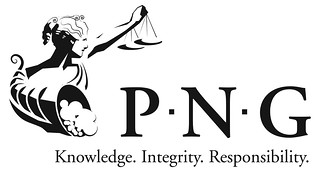 The Professional Numismatists
Guild (www.PNGdealers.org) is now accepting nominations for its 2023 awards,
according to PNG Executive Director Robert Brueggeman.
The Professional Numismatists
Guild (www.PNGdealers.org) is now accepting nominations for its 2023 awards,
according to PNG Executive Director Robert Brueggeman.
The PNG publicly recognizes outstanding achievements in the hobby and the
profession by honoring deserving recipients with prestigious awards. We cordially
welcome and strongly encourage nominations from all collectors and dealers,
said
Brueggeman.
The award winners will be announced on April 26, 2023 during the 2023 PNG Day banquet to be held in conjunction with the Central States Numismatic Society convention in the Chicago suburb of Schaumburg, Illinois.
Award nominations must be submitted by February 15, 2023 and should be sent directly to the appropriate PNG award category officials. The categories and contacts are:
Abe Kosoff Founders Award: Presented to a PNG member-dealer with steadfast dedication to the entire numismatic community and who has made a significant contribution to the Guild or to the numismatic fraternity. The award is named after PNG's Founding President who spearheaded the 1953 launch of the organization. Committee Chairs: Richard Weaver and John Feigenbaum Emails: RWeaver@dvrcc.com and John@PNGdealers.org.
Sol Kaplan Award: To recognize efforts and contributions in combatting crimes against the numismatic community, this award is presented to someone who has given their time to rid the profession of fraud and thievery. The Kaplan Award is named after a former PNG President and Ohio dealer who was personally responsible for the apprehension of several people suspected of committing numismatic-related crimes. Committee Chair: Robert Brueggeman and Doug Davis. Email: Bob@ppius.com and Doug@ACEFonline.org.
Robert Friedberg Award: Presented to an author in recognition for an outstanding book or other literature. Named in honor of a publisher and author of numismatic reference books, this award is not automatically given each year. It is only given when there is deemed to be a worthy recipient or recipients. Committee Chair: James A. Simek. Email: nge3@comcast.net. Note: A copy of each book nominated for this year's award must be submitted for delivery no later than February 15, 2023 to James A. Simek, P.O. Box 7157, Westchester, IL 60154-7157.
Harvey G. Stack Lifetime Achievement Award: Presented to a numismatist for his/her extraordinary devotion to numismatics and who, over their lifetime, significantly contributed to the hobby or profession. Committee Co-Chairs: John Brush and James Sego. Emails: John@DavidLawrence.com and JSego@JMScoins.com.
Significant Contribution Award: Given to those who have made exceptional, beneficial efforts over the years on behalf of PNG and the profession, and also added to the hobby. Committee Co-Chairs: Vince Wade & William Gale. Emails: vince@pinehurstcoins.com and bgale@amsi-corp.com.
Art Kagin Ambassador Award: This award is named after a former PNG President and nationally-known Iowa dealer who provided distinguished service as an advocate of numismatic goodwill. Committee Co-Chairs: Dustin Johnston and Don Rinkor. Emails: dustin@ha.com and Don@rinkor.com.
The Professional Numismatists Guild is a nonprofit trade association composed of the country's top rare coin and paper money dealers who must adhere to a strict Code of Ethics (www.PNGdealers.org/code-of-ethics) in the buying and selling of numismatic merchandise.
For additional information about the PNG awards, contact Robert Brueggeman, PNG Executive Director, 28441 Rancho California Road, Suite 106, Temecula, CA 92590. Phone: 951-587-8300. Email: info@PNGdealers.org. Online: www.PNGdealers.org.
For more information on the Professional Numismatists
Guild, see:
https://pngdealers.org/
VOCABULARY TERM: MEDALLION
Here's another entry from Dick Johnson's Encyclopedia of Coin and Medal Terminology. -Editor
Medallion. A large medal, round or nearly so. In America a medallion is a medallic item larger than three and one-eighth inches, in Europe it is larger than eighty millimeters (80mm). The term is frequently misused in sales literature for a medal of any size and has even appeared on medals of less than 3-inch diameter. Generally medallions less than 5-inches can be struck and have two sides; less than 8-inch diameter can have two sides but only if cast. All those over that size are cast uniface. The upper size of a medallion is not defined.
A medallion is not a small medal enlarged, rather a work of art created – and intended -- to be larger than 80 millimeters. The increased size gives the medallic artist more canvas to prepare his creation; thus medallions often have more detail, design or devices to justify their larger size. The worst thinking in creating large medallic art is to make the subject, the award, or the theme appear more important by making it larger in size. This faulty premise has resulted in some bad medallic art.
Also, the pattern for a medal should not be called a medallion.
It is not. Patterns are typically oversize (from two to ten times the intended size item), which are reduced on the die-engraving pantograph. The pattern for a struck medallion is also oversize, all others are modelled exact size..
When a relief item is, say, 12-inch (30.5 cm) diameter or more it is appropriately called a circular relief, always uniface, When a relief item is embedded in the floor of a building it is called a floor medallion; it can be any size and obviously uniface.
While a medallion in other art forms as part of some larger work a medallion is a large round design, often within a border containing a device or portrait (but usually without any lettering). Such medallion designs are found in painting , tapestry, fans, furniture, textiles, carpets. A similar large round design in sculpture or architecture is called a tondo, it usually stands alone,
To read the complete entry on the Newman Numismatic Portal, see:
Medallion
(https://nnp.wustl.edu/library/dictionarydetail/516294)
PAULINE PAULING EMMETT (1902-2003)
E-Sylum Feature Writer and American Numismatic Biographies author Pete Smith submitted this article on Numismatic Ambassador and Society of International Numismatists founder Pauline Pauling Emmett. Thanks! -Editor
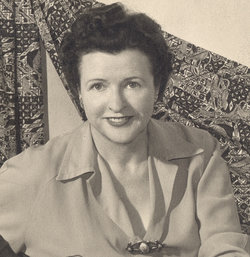 This week I was reviewing the list of people who were named as a Numismatic News
Numismatic Ambassador. They included Baber, Hendershott, Lenker and Newman, already
noted as attaining the century mark. New to me was a woman whose name and name changes
become a big part of her story. Before we get to her, I want to mention her brother.
Herman Henry William Pauling (1876-1910) and Lucy Isabelle Darling (1881-1976) had a son
on February 28, 1901. They named him Linus after his mother's father and Carl after his father's
father.
This week I was reviewing the list of people who were named as a Numismatic News
Numismatic Ambassador. They included Baber, Hendershott, Lenker and Newman, already
noted as attaining the century mark. New to me was a woman whose name and name changes
become a big part of her story. Before we get to her, I want to mention her brother.
Herman Henry William Pauling (1876-1910) and Lucy Isabelle Darling (1881-1976) had a son
on February 28, 1901. They named him Linus after his mother's father and Carl after his father's
father.
New Scientist named Linus Carl Pauling as one of the 20 greatest scientists of all time. He won a Nobel Prize in Chemistry in 1954 and a Nobel Peace Prize in 1962. I wonder if his little sister had difficulty living up to his accomplishments.
When the Paulings had a daughter the following year, they gave her the middle name of Darling to honor the family of her mother. Perhaps they gave her the first name of Pauline because they found it amusing.
Pauline Darling Pauling was born in Portland, Oregon, on August 7, 1902. She attended Behnke-Walker Business School to learn shorthand and touch typing. She claimed to have set a world record for speed typing.
She got a job at the Elks Club in Portland where she met Wallace G. Stockton, She married him in 1925 and they moved to Los Angeles where she worked as the women's athletic director at the Elks Club. Pauline and Wallace were divorced in the later 1920's.
When she got married to Thomas Joseph Ney (1896-1968) on October 6, 1934, her name was given as Pauline D. Stockton. It was the second marriage for both of them who were divorced. Their son Michael Thomas Ney followed quickly on December 23, 1934. They divorced in 1950.
She designed a woman's slipper and marketed it through her company, Paddies, Inc. They lost their market share to cheap foreign competition and she sold the company.
She developed an interest in numismatics and she opened a coin shop in Santa Monica, California, that operated 1960 to 1963. During this time she was an award winning exhibitor showing her collection of medals. She became acquainted with another dealer from Inglewood, Clarence Dunbar.
Her name was Pauline D. Ney when she was married on August 25, 1973, to Clarence Albert
Slim
Dunbar (1897-1975). When they moved in 1974, they issued a change of address notice
in the form of wood flat. 3x5 inches. That marriage lasted less than two years and he died on
August 13, 1975.
She returned to Oregon where she was courted by Dr. Paul Hugh Emmett (1900-1985), a friend of Linus. He had worked on the Manhattan Project during WWII. Linus Pauling was an anti-nuke peace activist and Paul Emmett helped to make the bombs, Paul and Pauline were married on May 22, 1976. He died in 1985.
She was a founder of the Society of International Numismatists (S.I.N.). In 1983 she was named a Numismatic News Numismatic Ambassador.
Pauline Darling Pauling Stockton Ney Dunbar Emmett died at home in Tualatin, Washington, on October 19, 2003, at age 101. Her death was noted in The E-Sylum for October 26, 2003, but no one at the time put her on the list of 100-year-old numismatists.
Thanks, Pete! What an interesting life - another numismatist deserving of great recognition. Can anyone tell us more about the Society of International Numismatics? -Editor
To read the earlier E-Sylum article, see:
S.I.N. FOUNDER PAULINE PAULING EMMETT DIES
(https://www.coinbooks.org/esylum_v06n43a03.html)
MORE ON WALT HUSAK
Chuck Heck passed along the obituary for Walt Husak prepared by Walt's family. Thank you - this expands on what we had earlier about his life and collecting. -Editor
What to tell you about Walter, so that you know how much he is missed?
- He loved people—he always wanted to know who you were and what made you tick.
- He paid local bills in person—so he could check in with people and chat.
- He could talk to anyone, anywhere, about anything, and almost always you would leave the conversation as his friend, and would soon be invited over for wine.
- He was a man of numbers, with a mind that listed and categorized and compared, which assured his success in the aircraft parts business, and in his great passion, collecting Early American large cents.
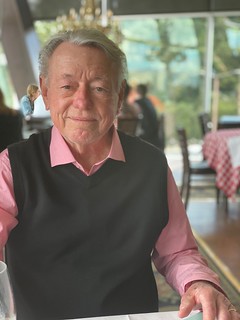 Walt was born in 1942, and though his mother lived in LA, anxiety about WW2 caused her to move to Chicago, where he was born. Two months later, they returned to LA, and Walt always proudly declared himself an Angeleno.
Walt was born in 1942, and though his mother lived in LA, anxiety about WW2 caused her to move to Chicago, where he was born. Two months later, they returned to LA, and Walt always proudly declared himself an Angeleno.
His entrepreneurial spirit was evident from an early age: at around 12-13 he manually set bowling pins in his local bowling alley to earn some money, and he would scour his mother's waitressing tips for coins whose value exceeded their face value. Some summers, he would work on his grandfather's farm in Iowa.
During one of those Iowa summers, Walt visited his father who worked at a bank in Cedar Rapids. Walt bought a roll of nickels and discovered that some were worth $15 a piece. At a local coin shop, that same summer, he received $15 per coin. His love of coins was cemented, his collector spirit ignited. And he became a life-long collector.
Walt always thought of coin shows and coin collecting as his college education. Although he began by collecting silver dollars, he fell in love with large cents, joining Early American Copper and becoming a Boy of 1794,
the group that focuses on early American copper.
The 2008 collection Walt amassed and sold at action was outstanding, featuring some of the finest known of certain coins. That year, Walt sold his beloved coin collection to world-wide acclaim. The collection itself was outstanding, including many of the finest known of certain coins. So stunning was his collection, and the money the auction generated, that even Saturday Night Live commented on it.
Of his many impressive coins, he most loved the Crying Lady and the Star Reverse.
While it may seem that coins were his life, there was more to Walt. He met his second wife, Patricia, in a rainstorm at the Onion Church in Sepulveda, CA, at a Parents Without Partners meet-up. At that time, Walt drove a 1969 avocado green Pontiac station wagon, and the two of them began travelling across California--the only problem is that whenever the Pontiac crossed LA county lines, it inevitably broke down.
To add to their savings, on the weekends Walt and Patricia would sell roller skates and shower curtains at the Rose Bowl, while during the week Patricia worked at Xerox, and Walter worked at Burbank Aircraft. Worried by the rising housing prices during the 1978 LA real estate boom, they decided to buy a house in Van Nuys, for the then exorbitant amount of $76,000 (no typo!). With Patricia's encouragement, Walt began HK Fittings in their garage. They married shortly after in the backyard, next to their 1950s swimming pool, on the hottest day of the year in 1982...
But to tell you about this leaves out his first travels to Europe, which fueled his life-long delight in travelling. It does not tell you about his growing love of the Santa Ynez Valley, which they first visited after he ran a marathon in Lompoc, after which they drove to Solvang to have dinner. They walked around Solvang and were smitten. On Walt's birthday, Patricia gifted him a weekend at what was Fess Parker's Hotel in Los Olivos, and they looked at houses. They fell in love with one on Fredensborg Canyon, which they bought that very weekend. They have had a house in the Valley ever since.
Patricia encouraged Walter's adventurous spirit: they have ridden elephants in Thailand, driven all the California scenic routes, which sometimes led to unexpected experiences. In New Zealand, Walt refused to drive, so they took a bus and traveled across the South Island. They went to Turkey and Greece, Sicily and Tibet, China and London, and almost everywhere in between. It might be easiest to say that they have not been to Japan and India.
Walter is survived by his wife of 40 years, Patricia, by Wally, his son, who has his same ability at numbers, by Trina, his daughter, who has his encyclopedic mind, and his tendency to want to build the perfect organizing system. He has many grandchildren, from his Oregon grandchildren to his great-grandchildren in Tennessee. He has a step-daughter who is a professor, a step-son (deceased) who was an architect, and grandchildren living in LA, Spain, and Miami.
Anyone who knew Walt, will miss him. As one of his grandchildren said, he taught them about what makes a good oyster, and what makes a good human being.
An obituary is a vain attempt at encapsulating a life that cannot be summarized. We miss and love Walter, a man whose life is as improbable as it was successful. A man whose life can be summarized by all the many people who miss him, and who love him still.
Also, Ken Berger supplied this gallery of images of Walt. -Editor
To read the earlier E-Sylum article, see:
WALTER J. HUSAK (1942-2022)
(https://www.coinbooks.org/v25/esylum_v25n51a03.html)
ROSA AMERICANA FIXED PRICE LIST #23 SELECTIONS
Here are a few items that caught my eye in Jeff Rock's Rosa Americana Colonial Coins fixed price list #23. To get your copy, contact Jeff at rosaamltd@gmail.com. -Editor
18. 1740-B [Rouen Mint] French Colonies Sous Marques, Vlack 51. Rarity-3. PCGS Graded MS62. A lovely representative example of this type, or the variety in particular. Well struck, the legends, date, mintmark and differents (the symbols for the engraver and mint master) are all bold around the peripheries. The central designs are full, a shade less sharp than the legends, and the whole coin is a lustrous silver that has whispers of light golden toning. There is a thin pair of striations running through the crown on the obverse, which were in the planchet prior to striking, and no marks or damage from actual circulation, and the piece has lovely eye appeal. To this cataloguer's mind – and he's formed two collections of the French Colonies coinages that each had over 800 pieces! – the billon Sous Marques offers so much collecting enjoyment. They are listed in the Redbook, meaning collector interest will always be there.
There is a huge range of dates and mintmarks – something lacking on colonial British and early American coinage. Bob Vlack's reference work, published through C4, is pretty thorough, yet there are still some unlisted varieties to be found – always a bonus for a collector – and extremely rare die varieties are available for little more than type coin money, something the collector on a budget should really appreciate. While struck in billon, a low grade silver, they are the only really affordable alternative to Massachusetts silver coins for those who want something other than copper in their colonial collection. Choice specimens can also be found for many date-and-mint combinations (though others exist only in well-circulated conditions), which strongly suggests that they were avidly collected at their time of issue, enough so that they remain quite affordable today.
The series would seem a natural fit for anyone who grew up
collecting penny boards,
filling in dates and mintmarks – but also offers the ability to have a
deeper dive and go into legend and punctuation variations (which the Vlack book details), or
crazier still, into the uncharted territory of individual die varieties. As choice examples of state
coinages drift into the high-four and five-figure ranges (and even six-figures for rare varieties),
we expect more collector attention on the French Colonies issues which can often be found
choice, and still in the low three-figures (and under Redbook pricing too!.............................$450
Ex Steve Tannenbaum Collection
25. 1787 Connecticut Copper. Miller 18-g.1. Rarity-6. Choice About Uncirculated. This is the STEVE TANNENBAUM specimen of the variety and appeared as Lot 7173 in the Stack's Bowers sale of his collection in January, 2012, where it was described as follows:
1787 Connecticut Copper. Miller 18-g.1, W-3045. Rarity-6. Draped Bust Facing Left. EF- 45. 130.1 grains. Deep golden brown with traces of red in the protected areas though no doubt from a long-ago cleaning. Sharpness easily equal to the task of the assigned grade and readily comparable to Perkins:290 and Ford:313. Usual swelling in left obverse field, some central ticks from the striking process at the center and a light natural fissure along the hair ribbon, reverse with numerous tiny central ticks as well. Nicely centered and highly attractive, and perhaps at the low end of the Condition Census for the variety.
We disagree slightly with the cataloguer of that sale in terms of grade – to our eyes the light red in the protected areas is completely natural, and the coin is a full AU in grade; bidders in the audience certainly agreed, as the piece realized $1,150 over a half dozen years ago, which was fair AU money at the time. Steve considered it to be the second finest known of the variety, and indeed we have not seen anything better than this at auction; the closest was the Partrick- Hessberg coin, an AU with a large planchet flaw. Ford's was a Choice VF but still called the second finest seen by its cataloguer – though this example is much nicer in every respect. This is one of a handful of Connecticut Copper varieties that proved to be much rarer than previously thought, and its rarity rating has gone up over the years while most others have drifted at least slightly downwards. This example has the typical late obverse die state, the swelling no doubt accounting for the rarity of the variety today. This obverse was paired only with this reverse, so it seems both dies must have failed around the same time. A gorgeous example of a legitimately rare variety, with an exceptional provenance. This will simply not be improved upon.......$2,250
Accompanied by Steve's original handwritten envelope and the lot ticket from the auction of his collection.
PANIC OF 1837 SATIRICAL BANKNOTES
This press release from Heritage highlights some interesting Hard Times satirical banknotes. -Editor
Paper money and pieces that look like paper money have historically served as the platform for airing political and economic views. In the United States, for example, colonial paper money made extensive use of patriotic emblems and mottos to promote independence and resistance. More recently, so-called notgeld notes, which offered thousands of distinctive designs and themes, were issued in post-World War I Germany. Many of these notes served as tiny billboards for messages decrying real and perceived wrongs endured by the nation in the years following the War to End All Wars, often in a humorous or satirical fashion.
The period in United States history known as the Panic of 1837 or Hard Times resulted in the issue of a large number of both tokens and paper money look-alikes that were used to attack the Government policies and practices of that era.
In early 1832, President Andrew Jackson vetoed an attempt, led by Henry Clay, Daniel Webster, and Nicholas Biddle, President of the Bank of the United States, to preemptively recharter the institution four years before its charter was due to expire in 1836. Jackson viewed the bank as corrupt, unconstitutional, and as a tool used by the rich and powerful to control both the economic and political future of the country. The Bank of the United States soon became the focus of the 1832 election, with Jackson winning a second term despite strong support, both financially and otherwise, of Henry Clay by the bank. Believing he had a mandate from the American electorate, Jackson embarked on an aggressive campaign to further weaken the Bank of the United States in 1833. This precipitated the so-called Bank War which saw Jackson swiftly remove Federal deposits from the Bank of the United States and place them with dozens of state-chartered commercial banks which soon came to be known as Jackson's Pet Banks because many of them were well connected politically with the administration. In 1834, the Senate censured Jackson, but the House of Representatives affirmed his actions; all of this along party lines. The battle raged on until February 11. 1836 when the Bank of the United States began operating with a Pennsylvania state charter, avoiding closing. The bank suspended specie payments in 1839 and failed in April, 1841.
During the Jackson administration and the beginning of the Van Buren administration, the nation enjoyed relatively high prosperity, with rising agricultural prices and a speculative bubble in land prices. Banks were quite willing to make loans and the inevitable specter of inflation appeared. In reaction to this inflation, the so-called Specie Circular, issued by the Treasury Department on July 11, 1836, mandated that purchases of public lands (320 Acres or more) be made only in gold or silver coin after August 16, 1836 (December 15, 1836, for smaller purchases or for purchases made by settlers as opposed to speculators). This action burst the land speculation bubble and caused a cascade of bank failures and loan foreclosures, leading to a drop in agricultural prices. This forced many farmers and planters to default on loans that they could not repay. Soon a general recession, bordering on a depression was in full force.
The nation's dire financial situation soon led to both traditional protests and to the use of (usually) satirical tokens and paper money lambasting Jackson, Martin Van Buren, who followed the same policies as his predecessor, and the nation's financial situation in general.
Heritage Auctions is currently offering an unusually large group of the Hard Times satirical notes, with 21 examples appearing in the firm's upcoming FUN Currency Signature Auction to be held on January 11-13. 2023. This is one of the largest offerings of these historic notes in recent memory and includes a number of both interesting and rare examples. Many of these notes have very complex messages and imagery that require extended study to fully appreciate. Some have persons identified whose names have been subsequently lost to history. These notes are typically rare, with only a few surviving examples, because they were really bank note look-alikes rather than actual bank notes. Once the message had been read, the vast majority were simply discarded and so each note tends to be a minor (and often major) miracle of survival.
Some of the highlights include (Lot 3591-20186) a possibly unique note from Chapel Hill, NC. Printed on bright yellow paper, this Golden Currency
note takes a dig at Jackson and Senator Thomas Hart Benton for opposing the recharter of the Bank of the United States. Benton graduated from the University of North Carolina at Chapel Hill, undoubtedly accounting for the purported issue city on this note. It also features a small vignette of a man fleeing with a bundle on his shoulder labeled REMOVING DEPOSITES
referring to the Jackson's move to shift federal deposits to the so-called Pet Banks from the Bank of the United States in 1833.
Another note in the collection (Lot 3591-20212) is also believed to be unique. Issued by the Chelsea Clam Bank,
which promised to pay the bearer 100 Clams, it features a vignette clearly aimed at Andrew Jackson depicting a thief with a sack on his back clearly titled Removing the Deposites being pursued in the middle of the night by a bank security dog. The other vignettes are those of a (Democratic) donkey and a pig. With a well -documented provenance, this note traces its history back at least five decades.
One of the most graphically complex notes in the collection (Lot 3591-20213) pulls no punches in attacking both Jackson and Van Buren. In the center vignette, Martin Van Buren is depicted as a cat-like creature being pulled on a wagon full of deposits toward an arch labeled Rail Road to Perdition. Another vignette features an animal resembling Martin Van Buren slinking behind a donkey, carrying saddle bags marked DEPOSITS, whose face appears to be that of Jackson. The road they are travelling on has a sign pointing to RUIN. The note's third vignette depicts Jackson, dressed in a woman's clothing holding a tattered flag labelled CONSTITUTION and holding what appears to be a fan labelled VETO, standing on trampled papers labelled CONGRESS VOTES, PEOPLE'S RIGHTS, and COMMON SENSE.
This is just a small sample of the notes that are part of the most important collection of Hard Times satirical notes to appear in decades.
THE BOOK BAZARRE
Bowers Seriesof numismatic references, award-winning author Joshua McMorrow-Hernandez provides a richly detailed 384-page study of the world's most popular silver bullion coins. Whether you collect American Silver Eagles or invest in them, or both, you can order your copy online at Whitman.com , or call 1-800-546-2995.
NATIONAL BANKNOTE WITH MISMATCHED PREFIX
This press release issued December 29th by World Banknote Auctions highlights a rare misprinted National Bank Note. -Editor
Today, World Banknote Auctions, the only auction firm in the United States specializing in US & World Paper Money announced the discovery of only the third National Banknote with a mismatched prefix letter. Part of the Navy Commander Collection of U.S. National and Gold Banknotes, the note is a 1929 Type 1 $10 National Banknote on Charter #200, the First National Bank of Boston, Massachusetts. The note displays serial number B011362A on the left side and serial number E011362A on the right side and has been graded Very Fine 25 by PMG.
This is an extremely exciting discovery and the first example of such an error to come to light in
many years
said Dennis Hengeveld, President of World Banknote Auctions. Only two
examples were previously known, with this example joining an extremely elusive group of
mismatched prefix National Banknotes, one from the Farmers & Merchants National Bank of
Fort Branch Indiana, and another from the First National Bank of Boston. This new discovery
will give collectors the opportunity to acquire one of the greatest errors in the National Banknote
series. It's been almost a century since National Banknotes were last issued, and it is unlikely
that many more discoveries such as this are to be made
.
This exciting error note will be offered in part 1 of the Navy Commander Collection of U.S. National and Gold Banknotes on March 10, 2023. The collection, assembled over several decades by a dedicated collector of National banknotes focuses on California, but also includes a selection of National Banknotes from around the nation. It is offered unreserved, with many of the notes seeing their first public auction appearance in at least a decade or more.
About World Banknote Auctions: Headquartered in Sacramento, California, World Banknote Auctions was founded by Dennis Hengeveld. The firm specializes in auctions of US & World Paper Money held regularly on its website, www.worldbanknoteauctions.com.
WORLD BANKNOTE AUCTIONS SALE 37
World paper money highlights are featured in this press release for the World Banknote Auctions Sale 37. -Editor
World Banknote Auctions has now launched Live Sale 37 at www.worldbanknoteauctions.com. Live Sale 37 takes place on January 12, 2022, with live bidding that day at 1 PM Eastern / 10 AM Pacific. Please note that Sale 37 is divided in two parts, each selling on a different day. The first live session with 592 lots takes place on January 12 at 10 AM PST. The second session with 519 lots closes on January 15 at 3 PM PST (special bidding rules apply for the timed sale, please see our website for details). Our bidding platform can be accessed directly by going to bid.worldbanknoteauctions.com or through our mobile apps.
Lot #37077: Canada 1954 BC-40b PMG Choice UNC 63 EPQ 10 Dollars (Low S/N 1)
Lot #37094: Ceylon 3.6.1952 P-51 PCGS Superb Gem UNC 67 PPQ 5 Rupees
Lot #37098: China, People's Republic 1949 P-829b PMG Gem UNC 65 EPQ 50 Yuan
Lot #37138: East Caribbean States / Montserrat ND (1965) P-16l PMG Gem UNC 66 EPQ 100 Dollars
Lot #37158: Egypt 1940 P-166b PMG Gem UNC 65 EPQ 10 Piastres (Low S/N 4)
Lot #37253: Iraq 1947 (ND 1950) P-29 PMG Gem UNC 66 EPQ 1 Dinar
Lot #37279: Ireland - Republic 10.4.1975 P-69b PMG Gem UNC 65 EPQ 100 Pounds
Lot #37357: Lebanon 1964 P-59a PMG Choice About UNC 58 50 Livres
Lot #37392: Malaysia ND (1972-76) P-12 PMG Choice Very Fine 35 1000 Ringgit
Lot #37435: New Zealand, Commercial Bank of Australia 1.7.1919 P-S270Ab PMG Fine 12 10/- Shillings
For more information, see:
https://www.worldbanknoteauctions.com/
EARLY AMERICAN JANUARY 2023 SALE HIGHLIGHTS
Here's a press release with highlights of the Early American History Auctions sale closing January 14, 2023. -Editor
from the Collection of Ambassador J. William
BillMiddendorf
Early American History Auctions is proud to host our major auction, containing exceptional consignments of the American Colonial era through the Revolutionary War period, to the War of 1812 and beyond from various consignors. The diverse array includes numerous original historic autographed documents and engraved prints. As the former six-times United States Secretary of the Navy, with a family lineage tracing back to the very founding of the American Revolutionary Navy, Ambassador Middendorf's collection is deeply focused on these areas, often seen illustrated and discussed in history books. A few notable highlights include:
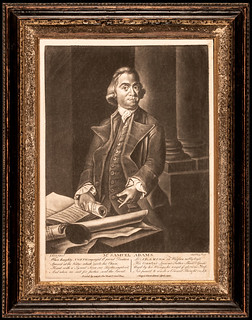 Extremely Rare April 1775-Dated,
Extremely Rare April 1775-Dated, Mr. SAMUEL ADAMS
Mezzotint Portrait Print by Charles Reak & Saml.
Okey, Newport, Rhode Island.
1788 THOMAS JEFFERSON Manuscript Document Letter Signed, addressed: To John Paul Jones Esqr.
- Commodore in the service of the United States of America
instructing John Paul Jones to meet with the
King of Denmark, to negotiate settlement of United States' Revolutionary War financial Claims on Captured
American.
JOHN ADAMS (Defense Attorney) and SAMUEL QUINCY (Prosecuting Attorney) Signed separate legal
document dated while both were together on the Exact Court Date the BOSTON MASSACRE
Trial Verdict
announcement, dated December 5th, 1770, each involved in the historic Boston Massacre
29th Regiment
British Soldiers trial.
Continental Congress President JOHN HANCOCK receives and dockets a series of 1776 naval correspondence from John Bradford, the Continental Agent at Boston.
Two Autograph Letters by Admiral JOHN A. DAHLGREN regarding the arming of the historic steam frigate
U.S.S. Niagara
which laid the first Trans-Atlantic Cable in 1858; returned 200 Slaves freed from a captured
Slaver
to Liberia (1858), and carried Japan's First Diplomatic Mission to the United States (1860).
STEPHEN DECATUR Jr. Signs as U.S. Frigate United States
as Commander, Partially Printed Document
certifying that a sailor had served on the United States.
DAVID G. FARRAGUT Signed and Inscribed November 1, 1864 Dated Civil War Photograph, Inscribed:
Quarter Deck men of the Hartford Flag Ship Mobile Bay Nov. 1st 1864. (Signed) D. G. Farragut.
JOHN HANCOCK Signed April, 1767-Dated Faneuil-Hall LOTTERY
Boston, Massachusetts winning
Lottery Ticket.
President THOMAS JEFFERSON and JAMES MADISON Signed Four Language Ship's Papers.
MARQUIS DE LAFAYETTE Signed, September 10, 1789 French Revolution Related Document, requesting the production of a special GOLD Medal, at Paris.
President of Congress HENRY LAURENS Signed Continental Congress April 3, 1776 Printed Privateers ACT Broadside.
Two April 29th, 1775 Dated HENRY MIDDLETON Signed South Carolina Colonial Notes, both remarkably issued TEN DAYS after the Battle of Lexington & Concord.
July 6, 1798 Naval Oath of Allegiance
Printed Document, listing Seamen to serve on the first Federal U.S.
Navy Warship, the Frigate United States
under command of Commodore JOHN BARRY.
GEORGE WASHINGTON Signed Handwritten financial ledger Document, listing Land and Twenty-Six Negro
Slaves as Washington's Collateral, this debt Collateral was Collected on as an Unpaid, providing him 26 Slaves.
c. 1780 Silversmith EPHRAIM BRASHER engraved COIN SILVER TEAPOT hallmarked BRASHER + N
YORK
.
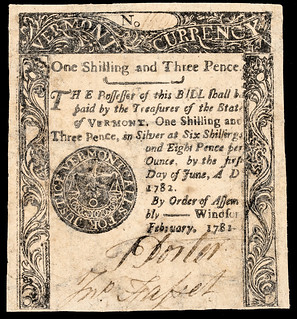 February 1781
February 1781 VERMONT CALLS FOR JUSTICE
Colonial Currency One Shilling & Three Pence Note,
PMG certified Choice Fine-15.
1784 PAUL REVERE Engraved Masthead Massachusetts Spy
Newspaper, with Liberty Defended From
Tyranny
with report on the Treaty of Fort Stanwix & the Mohawk Indian Chief Joseph Brant, newspaper
Identified as belonging to Stephen R Bradley Esqr,
credited with writing the 12th Amendment of the United
States Constitution.
May 2, 1780 Revolutionary War, Continental Congress Instructions for American Ships Commissioned as
Privateers, signed in print CHARLES THOMSON, Secretary.
c. 1810 President George Washington hand-painted Miniature Portrait, housed in a custom engraved Sons of
Washington
member's Gold Bezel.
Two historic George Washington Oil Paintings on Canvas, each after Gilbert Stuart.
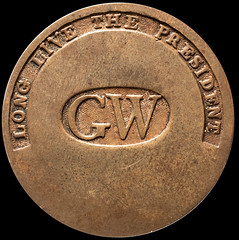 (1789) George Washington Inaugural Button Collection of five major types, including a Unique Discovery type,
Unlisted in the Albert and Cobb references.
(1789) George Washington Inaugural Button Collection of five major types, including a Unique Discovery type,
Unlisted in the Albert and Cobb references.
1804 Landmark Freedom of the Press
First Amendment Case of 1803, pitting Thomas Jefferson v. General
(Alexander) Hamilton, rare Imprint regarding the Historic Harry Croswell Libel Case.
President ABRAHAM LINCOLN's substantial Lock of Lincoln's hair with provenance to its Gifting by Mary Todd Lincoln.
American Colonial Coinage & Medals Include: 1723 Wood's Hibernia, Silver Pattern Farthing. DEI GRATIA.
REX., PCGS graded SPECIMEN-64.; 1723-D French Colonies Gold Louis d'Or, NGC graded Uncirculated
Details; 1725-H France 1 Louis d'Or, NGC graded Uncirculated Details; Great Britain Silver 1713 PAX
MISSA Pattern Farthing of Queen Anne, NGC graded Mint State-63; 1787 Immunis Columbia, Copper Pattern,
Eagle Reverse, PCGS graded Extremely Fine-40; 1796 Silver Castorland Medal, Original Obverse and Reverse
Dies, NGC graded About Uncirculated-58; Five historic United States Indian Peace Medals including a Unique
variety 1825 John Quincy Adams Indian Peace Medal Trial Strike
Obverse Impression struck in Lead; a
Unique large size Discovery
1857 President James Buchanan Indian Peace Medal, the Only Known Example
with engraver Willson's Signature located in the reverse die. Alas, there are far too many exciting highlights to
list, so please view our online auction catalog.
Throughout the various time-periods and sections of this auction represented you will find many other tantalizing, stimulating historic items of significance all available to review online currently at: www.EarlyAmerican.com.
Please be certain to ask any questions or special requests well in advance of the Saturday, January 14th auction closing date. We are proud to once again be offering wonderful items from Bill Middendorf's outstanding collection, being one of the foremost collectors of our era. Consignments are most welcome. Please contact Early American History Auctions to consign your valuable collectibles to our future auctions.
KEUNKER SALE 381 HIGHLIGHTS
Here is the press release for the upcoming Künker February sale 381. Many great coins here. -Editor
The Dr. Eberhard Werther Collection
On 7 February 2023, Künker will auction off the Dr. Eberhard Werther Collection with coins and medals of the German states from the Middle Ages to the 19th century as well as world coins. The focus is on Brunswick.
There are probably only a few collectors and coin dealers left who are still familiar with Dr. Eberhard Werther (1913-1985). In his preface to the catalog of eLive Premium Auction 381, Fritz Rudolf Künker describes him as a somewhat obstinate and secluded coin dealer, who ran his coin shop in Brünninghausen near Dortmund. Although Werther was spared from actively taking part in World War II, he suffered irreversible damage to his health as a war prisoner in the Soviet Union. In fact, Eberhard Werther had wanted to become an English teacher and wrote his doctoral thesis on the idea of representation in the context of English parliamentarianism
. However, the unexpected purchase of an extensive and important collection of Pomeranian coins paved his way into the coin trade. By means of hectographed fixed-price lists, which he called Speigelberger Münzverkehr
, he promoted this collection and many others that were to follow. Among his colleagues, Dr. Eberhard Werther was known for not liking to sell his coins to dealers. He always waited to see whether there was a private collector who wanted to buy the piece instead.
Almost 40 years after his death, his sons now decided to let their father's collection re-enter the numismatic circle. It's a typical collection as they were assembled in in the 1960s and 1970s: rarity and historical importance were of more importance to the collector than a coin's quality. Although there are certainly specimens of attractive quality among the pieces, most are very fine
and very fine +
, enabling committed collectors to purchase rare items at reasonable prices.
In terms of content, the collection ranges from a small selection of world coins (36 pieces) to some Habsburg specimens (10 coins) and coins and medals from the German states (273 pieces). The time frame ranges from the high Middle Ages to the early 20th century. The auction focuses on Brunswick, a chapter with about 140 lots, representing almost half of the entire sale.
Lot 1001: E. Fiala, Münzen und Medaillen der Welfischen Lande. Set of volume 1-11. Various bindings. Estimate: 1,000 euros.
Two very particular lots should be highlighted here: The auction starts with an almost complete set of the original prints of E. Fiala's work on coins and medals of the Welf lands, written by the author on behalf of the then head of the House of Hanover, Ernest Augustus, Duke of Cumberland, Duke of Brunswick and Lüneburg. Only the extremely rare 12th volume, of which only a few copies were printed in 1919, is missing. Some volumes contain a book dedication by the author.
No. 1276: Rügen. Jaromar I, 1168-1218. Bracteate. Extremely rare. Very fine +. Estimate: 1,000 euros.))
No. 1277: Rügen. Jaromar II, 1249-1260. Bracteate. Extremely rare. Very fine +. Estimate: 750 euros.
We also want to mention two extremely rare bracteates from the island of Rügen, Germany's largest and most populous island, right opposite of Stralsund. In 1168, the Danish king Waldemar I conquered the island and forced the Slavic Rani to get baptized. Rani prince Jaromar I became a Danish vassal. He had a very rare bracteate minted on Rügen, the second piece is from his grandson Jaromar II.
Of course, these aren't the only interesting coins. We present a small selection of attractive specimens:
No. 1028: Bolivia. 1825 silver medal commemorating Simon Bolivar, dedicated to him by the city of Potosí. Beautiful patina. About FDC. Estimate: 1,000 euros
No. 1036: USA. 10 dollars 1926, Philadelphia. Extremely fine. Estimate: 750 euros
No. 1041: Habsburg hereditary lands. Archduke Ferdinand Charles, 1632-1662. Double reichstaler n.d. (1654), Hall. About extremely fine. Estimate: 1,000 euros
No. 1058: Prussia. Frederick II, 1740-1786. Double Friedrichs d'or 1765 A. Very rare. Very fine. Estimate: 3,000 euros
No. 1147: Brunswick-Lüneburg. Frederick, 1636-1648. Reichstaler n.d. (1643/48), Zellerfeld. Very rare. About extremely fine. Estimate: 500 euros
No. 1163: Brunswick-Lüneburg. Frederick, 1636-1648. 1643 reichstaler commemorating the death of his sister Margaret. Very rare. Very fine to extremely fine. Estimate: 1,000 euros
No. 1195: Brunswick-Hanover. George V, 1851-1866. 10 talers 1854. Extremely fine. Estimate: 1,500 euros
No. 1217: Bremen. Reichstaler 1723. Extremely fine +. Estimate: 1,000 euros
No. 1226: Frankfurt. 1658 double ducat commemorating the coronation of Leopold I as Holy Roman Emperor in Frankfurt. Very rare. About extremely fine. Estimate: 3,000 euros
No. 1240: Hersfeld / Abbey. Siegfried, 1180-1200. Bracteate, Hersfeld. Specimen of the Bonhoff Coll. (1977), No. 1388. Rare. Minor edge break. About extremely fine. Estimate: 500 euros
No. 1247: Jever. Friederike Auguste Sophie of Anhalt-Zerbst, 1793-1807. 1798 Prussian reichstaler, Silberhütte. Only 1,000 specimens minted. Rare. Very fine to extremely fine. Estimate: 500 euros
No. 1271: Pomerania. Bogislaw XIV, 1625-1637. Ducat n.d., Stettin. Very rare. Very fine. Estimate: 1,500 euros
No. 1285: Saxony. John Frederick the Magnanimous and Henry, 1539-1541. Taler 1540, Annaberg. Rare in this quality. Extremely fine. Estimate: 1,000 euros
To order a catalog contact Künker, Nobbenburger Straße 4a, 49076 Osnabrück; phone: +49 541 / 962020; fax: +49 541 / 9620222; or via e-mail: service@kuenker.de. You can access the auction catalogs online at www.kuenker.de. If you want to submit your bid from your computer at home, please remember to register for this service in good time.
For more information, see:
https://www.kuenker.de/en
FRANK S. ROBINSON 120TH AUCTION
Here's the press release for Frank Robinson's February 2023 sale. -Editor
ANCIENT JEWISH COINS FEATURED IN ROBINSON AUCTION
Dealer Frank S. Robinson will conduct his 120th mail and internet auction of Ancient and Early Coins with a closing date of February 7. The sale will include 585 lots, low minimum bids, and bids to be reduced as competition permits. Robinson notes that reductions have averaged 15-20% in his recent sales. There is no buyer fee.
Featured in this sale is a further segment of a major collection of Judaean and Judaic related material, including some rare and important items. Highlights include an extremely rare small bronze of Herod Philip; a First Revolt Year Two Half Shekel in VF; and a Choice VF+ Judea Capta denarius of Vespasian.
Greek coins include several very Choice classic Athenian owl
tetradrachms; from Baktria a choice EF/AEF helmeted bust Menander Tetradrachm; a rare Elymais silver Tetradrachm of Kamnaskires V in Choice EF; a Parthian Tetradrachm, Sellwood 30.2, quite rare; and a Choice virtually mint state Shekel of Tyre.
Among Roman coins there is a nice Aes Grave Quadrans; VF Julius Caesar Denarius; a Choice EF/VF+ Agrippa As; a Nero Claudius Drusus Sestertius in AEF; a decent large Egyptian bronze of Antinous; and an EF Constantius I Argenteus.
This sale will also feature early Chinese coins, many in group lots; Byzantine and other early coinages, other group lots, literature, and a section of items offered at fixed prices.
Robinson holds about three auctions annually, and tries to offer a broad range of material for advanced collectors as well as bargain hunters. Catalogs are free; contact Robinson at Box 8600A, Albany, NY 12208; phone/fax 518-482-2639; e-mail frank@fsrcoin.com. The full catalog is at his website, www.fsrcoin.com.
NUMISMATIC NUGGETS: JANUARY 1, 2023
Here's a selection of interesting or unusual items I came across in the marketplace this week. Tell us what you think of some of these. -Editor
Charles I gold Crown, mint mark plumes, with pellet either side of crown reverse
Regular price £2,500
Charles I (1625-49), gold Crown, Tower Mint, group C, third elaborate crowned bust left, value V behind, initial mark plumes (1635-36) both sides possibly over bell on reverse, beaded circles and legend surrounding, CAROLVS. D: G: MA: BR: FR: ET. HI: REX., rev. crowned quartered oval shield of arms with frame, pellet either side of crown, C to left, R to right, CVLTORES. SVI. DEVS. PROTEGIT, weight 2.23g (Schneider 240; Brooker 204; N.2183; S.2714). With copper red tone both sides, a little double struck, very fine and a rare variety with the pellets.
The abbreviated Latin legends translate as on obverse "Charles by the grace of God, King of Great Britain, France and Ireland," and on the reverse "God protects his worshippers."
The original pyx trial records show that a total of £337,000 of crown gold was struck under the mint mark plumes a.k.a. feathers at full weight from 23rd June 1630 until 30th June 1631.
From the Sovereign Rarities website. -Editor
To read the complete item description, see:
Charles I gold Crown, mint mark plumes, with pellet either side of crown reverse
(https://www.sovr.co.uk/products/charles-i-gold-crown-mint-mark-plumes-with-pellet-either-side-of-crown-reverse-gm26281)
Ken Spindler writes:
"How's this for a political statement? Translated as: Cu Liard 1789, Brussels. Engraved mockery medal, Joseph II on the gallows. Herinek to 491, Jaeger/Jaeckel 38."
Thanks. Ken. Crude but succinct artwork. Google tells me "Kerk Dief" translates as "Church Thief" in Afrikaans. Here's some historical background from Wikipedia. -Editor
Regarding the Catholic Church, Joseph was virulently opposed to what he called "contemplative" religious institutions—reclusive institutions that were seen as doing nothing positive for the community.
By Joseph's decree, Austrian bishops could not communicate directly with the Curia anymore. More than 500 of 1,188 monasteries in Austro-Slav lands (and a hundred more in Hungary) were dissolved, and 60 million florins taken by the state. This wealth was used to create 1,700 new parishes and welfare institutions.
The education of priests was taken from the Church as well. Joseph established six state-run "General Seminaries". In 1783, a Marriage Patent treated marriage as a civil contract rather than a religious institution.
Josephinism made many enemies inside the empire—from disaffected ecclesiastical authorities to noblemen. By the later years of his reign, disaffection with his sometimes radical policies was at a high, especially in the Austrian Netherlands and Hungary. Popular revolts and protests—led by nobles, seminary students, writers, and agents of Prussian King Frederick William—stirred throughout the Empire, prompting Joseph to tighten censorship of the press.
To read the complete article, see:
Josephinism
(https://en.wikipedia.org/wiki/Josephinism)
To read the complete lot description, see:
Haus Habsburg (Los-Nr.: 1078, Startpreis: 40 € )
(https://www1.wago-auktionen.de/losdetail.aspx?auktion=136&losnr=1078&rid=7)
CHEIF ENGRAVER. "SPRING GARDEN INSTITUTE PHILIDELPHIA" ON THE OBVERSE.
A nice unawarded medal designed by Barber. Founded in 1851, the Spring Garden Institute was a private technical college. -Editor
To read the complete lot description, see:
1885-1889 AWARDS MEDAL BY CHARLES BARBER U.S. MINT
(https://auctions.bidalotcoinauction.com/lots/view/1-6WRI5O/1885-1889-awards-medal-by-charles-barber-us-mint)
Republic of China: Yunnan Province, silver 50 cents, 1917, three quarter profile of Tang Ji Yao (1882-1927), NGC MS63 #6374408-037. A most splendid example of this popular type. A well struck coin with minimal hairlines on closer inspection and all the fine details preserved. Rare in this choice grade. Dr. Werner Burger Collection. [not on list]
From the January 7, 2023 Spink China sale. -Editor
To read the complete lot description, see:
REPUBLIC OF CHINA: YUNNAN PROVINCE, SILVER 50 CENTS, 1917,
(https://live.spink.com/lots/view/4-8BPU0K/republic-of-china-yunnan-province-silver-50-cents-1917-)
Republic of China: Chinese Soviet Republic, silver 20 cents, 1933, (Y-508, LM-895), NGC MS61 #6374405-020. A most excellent example of this elusive and popular coin and a well struck example for type with only minor weakness in the legend. Rare. Dr. Werner Burger Collection. [not on list]
Also from the January 7, 2023 Spink China sale. -Editor
To read the complete lot description, see:
REPUBLIC OF CHINA: CHINESE SOVIET REPUBLIC, SILVER 20 CENTS, 1933, (Y-508, LM-895)
(https://live.spink.com/lots/view/4-8BPUXP/republic-of-china-chinese-soviet-republic-silver-20-cents-1933-y-508-lm-895-)
ROMAN COINS UNEARTHED IN ROMANIA
No numismatic details here about a find of what looks like Roman bronzes in Romania. -Editor
A Romanian man who went for a stroll to walk off Christmas lunch stumbled on a hoard of 800 Romania coins in western Romania, the state news agency Agerpres reported.
Csaba Koloszvari who made the find at Christmas in a plowed field in the western county of Alba, is already known in the area as a keen amateur detectorist. He found a trove of 100 silver coins this autumn in the nearby town of Ocna Mures.
He and a friend wanted to burn some calories after all those sarmele (meat and rice stuffed cabbage rolls). We're keen treasure hunters so we got out our metal detectors but didn't find anything and were about to put them away, but then came across 729 Roman coins, plus dozens of others which have been here for 2,000 years.
Koloszvari called round local archeologists he knew and eventually found one who came to the site and and dug out the coins which had been stored in a clay pot which was broken, he said in a post on Facebook.
Found via The Explorator newsletter. To subscribe to Explorator, send a blank email message to: explorator+subscribe@groups.io. -Editor
To read the complete article, see:
800 Roman coins unearthed by amateur metal detectorists in Romania
(https://universul.net/800-roman-coins-unearthed-by-amateur-metal-detectorists-in-romania/)
MANX MUSEUM BALLAQUALYE HOARD EXHIBIT
A BBC News article on the centennial of the Isle of Man's first national museum includes a discussion of an exhibit of the Ballaqualye hoard, the largest single collection found on the island. -Editor
The discovery of Viking silver during building works in Douglas in 1894, part of which ended up being dumped at a tip, fuelled the frustration of one man in particular, Victorian scholar Philip Moore Callow Kermode.
Unbeknownst to those who found it, the Ballaquayle hoard was the largest single collection of Viking silver ever found on the Isle of Man.
PMC Kermode, who led the antiquarians, was shown one of the coins and identified it as potential treasure trove, leading to a call from the chief constable for it to be recovered and handed in.
The hoard was confirmed as Viking silver by the British Museum in London but was retained by the institution for safekeeping, as the island did not yet have its own museum.
To read the complete article, see:
Museum reflects on 100 years of Manx history
(https://www.bbc.com/news/world-europe-isle-of-man-64042109)
NEW COMMEMORATIVE CHARLES III COINS
David Pickup passed along this article announcing additional Charles III coins. Thank you. -Editor
New coins to celebrate the Windrush Generation, the NHS and the Flying Scotsman train have been revealed.
The coins have been chosen as they will all mark important anniversaries and moments in history next year.
It will also be the first commemorative set to feature the King's official coinage portrait.
The Royal Mint says that all coins made from January 1, 2023 will bear his image.
Next year's commemorative set include new £5, £2 and 50p coins.
There will be a special £5 coin marking the 75th birthday of the King, a £2 coin celebrating the life and work of author JRR Tolkien (who wrote the Hobbit and the Lord of the Rings trilogy) and a £2 coin celebrating the centenary of one of the world's most famous trains - the Flying Scotsman.
There will also be a 50p celebrating 75 years of the NHS and a 50p celebrating the Windrush Generation.
The Windrush Generation is the name given to around 500,000 people who moved from Caribbean countries to the UK between 1948 and 1971 to help the country rebuild after the Second World War.
These people became known as the Windrush Generation, named after the ship that brought the first arrivals to the UK - the HMT Empire Windrush.
The Royal Mint say that the new collection symbolises one of the most significant transformations for UK coins in recent times.
Anne Jessopp, head of the company said: "As the official maker of UK coins, the Royal Mint has been proud to strike every single UK coin for Her late Majesty Queen Elizabeth II for 70 years.
As we enter the new year, we will start to see one of the biggest changes to UK coins for decades take place as King Charles III's portrait begins to appear on all new UK coins."
To read the complete article, see:
King Charles coins: New coins to celebrate Windrush, NHS and Flying Scotsman revealed
(https://www.bbc.co.uk/newsround/64115775)
WHEN MIMI GAVE WOZ A HOBO NICKEL
As a member of the Pittsburgh Numismatic Society I once had the pleasure of meeting Mimi Bizic, a local schoolteacher and collector and promoter of hobo nickels. The recent Vol 31, No 4. issue of Bo Tales from the Original Hobo Nickel Society included a nice article about Mimi and her relationship with Steve Wozniak, the cofounder of Apple Computer. I'd been unaware of that connection. With permission, we're publishing an excerpt here. Thanks to Bo Tales editor Ralph Winter for providing the text and images. -Editor
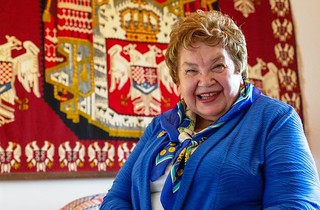 After seeing Del's
1981 COIN WORLD articles on hobo nickels, Mim
contacted Del and invited him to come to speak to her
class. This was shortly after Mim's fourth grade class had
finished a unit on Numismatics. More could be shared
including Del Romines second visit to Mim's 4th grade
class.
After seeing Del's
1981 COIN WORLD articles on hobo nickels, Mim
contacted Del and invited him to come to speak to her
class. This was shortly after Mim's fourth grade class had
finished a unit on Numismatics. More could be shared
including Del Romines second visit to Mim's 4th grade
class.
I need to share a little more about Mim. Mim had the opportunity to be one of the first teachers to use Apple Computers in the classroom. Through this relationship, she got to know and become friends with Steve Wozniak, one of the founders of Apple.
Here's an email I recently received from Mim:
Ralph,
I just want you to know that I'm getting ready to send one
of my great Bo's
to Steve Wozniak, the inventor of the
Apple computer. He was always a good friend of mine
through the years, like coming to Pittsburgh at his own
expense for me. (1) In 1988 when he came to speak to our
Apple Pitt's Computer Club that met once a month at
Penn State's McKeesport Campus, and (2) right before I
retired from Edgeworth Elementary School in May of
2004. I told him You always said you wanted to come to
my school. Well, you better hurry because I'm retiring in
June!
He did! Oh, what a delightful visit that was with
the whole school participating in This Is Your Life, Steve
Wozniak!
I first met Woz in Washington, DC, where my
students and I won a First Place award for Integrating the
Computers Into the Curriculum.
(We studied Egypt).
That was in 1985 where I received an Apple II for our
school. Even my U. S. Congressman, Doug Walgren was
there.
We repeated that in 1986 (Ancient Greece and Rome)
and 1987 (China and Japan) before they put me in the
Apple Computer Club's Hall of Fame and awarded me a
trip to Hawaii. I wasn't allowed to enter for two years as
nobody else had a chance!
When the two years were up,
we won again for Writing Women Back into History, but
Using Our Computers to Do So!
In total, we received 10 Apple computers over the years. One was a gift from Steve Wozniak when he returned to Apple to oversee the construction of the Apple II GS. So it's my turn to reciprocate. Woz said he collected Buffalo nickels as a kid, but he had never heard of Hobo nickels. I was thrilled to find something I could gift him!...
Mim Bizic
This is the letter Mim sent to Steve Wosniak and his
wife this summer all with the Bo
nickel.
My dear Woz and Janet,
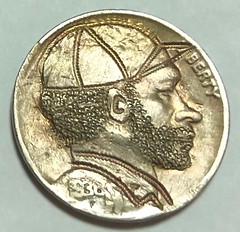 This letter is to certify that I am enclosing
herein one of my very best, genuine original (classic) hobo
nickels designed by the master carver, George
This letter is to certify that I am enclosing
herein one of my very best, genuine original (classic) hobo
nickels designed by the master carver, George Bo
Washington Hughes. It is a 1936 nickel from my own
collection of hobo nickels purchased from Ken (Del)
Romines of Louisville, KY, known as the father of the
book on Hobo Nickels. My purchase was in 1981, right
after Del wrote about finding Bo and writing about his
encounter in Coin World newspaper.
This coin probably only cost me $15-25.00, but that's like saying I purchased my original 5 shares of Apple stock for $40.00 each. Both have gone up in price quite substantially. I'm sure if you were to auction this off, it would bring quite a bit of money, but I'm hoping you keep it as a souvenir from a grateful admirer and friend for over 35 years.
For all these many years, you've been out there making APPLE the company it is today. YOU were the one who visited computer clubs all over the country at your own expense to talk about your incredible invention that has made a difference to so many countless lives in every country of the world. You were present to give Apple computer awards out at the ceremonies in Washington, DC for the International Apple Computer Clubs in 1985, '86 and '87. YOU valued Education! We are all grateful to you. I will be eternally appreciative to you for appearing at our Edgeworth Elementary School right before my retirement in 2004. You have done so much for others, it was my turn to do something special for you.
For more information about the Original Hobo Nickel Society, see:
http://www.hobonickels.org/
ANTIQUES ROADSHOW APPRAISES DICKIN MEDAL
The Dickin Medal was instituted in 1943 by Maria Dickin to recognize the contribution of animals in war. They are rare and appear on the market infrequently. An example recently surfaced on the Antiques Roadshow. -Editor
In a resurfaced episode of Antiques Roadshow, Paul Atterbury was presented with a "truly rare" medal which was bestowed upon a pigeon who escaped a plane crash in World War Two and found its way home. The bird was affectionately named Cologne and was the recipient of a Dickin Medal for its bravery. The BBC guest who owned the medal was stunned when she discovered how much it could fetch at auction.
"I heard about this story and it is wonderful to me for two reasons.
"One, I have never held a Dickin Medal before and it's somehow very powerful when you know what went on and what the story was like, and how that extraordinary pigeon achieved so much to justify this medal.
"Superficially, giving medals to animals makes you think, 'Well why?'
"But this is exactly why, and of course, it is important to remember that the Dickin Medal goes on being awarded as animals are still doing extraordinary things as they always have done.
"This is the only way we can acknowledge that."
He revealed the other aspect which excited him was that the medal was "very rare" and from a "great period in history".
Paul revealed: "Such a medal is likely to fetch around £10,000. Did you know that?"
His guest was speechless and started smiling in disbelief before saying: "No, not as much as that. We didn't realise it would be worth as much as that."
Paul replied: "They are truly rare and, of course, it is all to do with the story.
"So he was a wonderful pigeon, you could say he was the most expensive pigeon ever."
To read the complete article, see:
Antiques Roadshow guest speechless after valuation of pigeon's 'truly rare' bravery medal
(https://www.express.co.uk/showbiz/tv-radio/1714338/antiques-roadshow-pigeon-bravery-award-valuation-10000)
WEARABLE CONGRESSIONAL GOLD MEDALS
The October 2022 issue of The Clarion from the Pennsylvania Association of Numismatists (PAN) has a nice article by Harry Waterson titled "Off the Table - Onto the Chest" about the very few Congressional Gold Medals with authorized wearable versions. It's a lengthy and well-researched piece. Rather than puzzle out a way to excerpt it somehow for The E-Sylum, I thought we'd treat our readers to some numismatic eye candy - a photo gallery. See the original publication for all the details. Thanks to PAN and Harry for making this available. -Editor
Life Saving Table Medal of the First Class
Photos:
Table Medals; New-York Historical Society
Wearable Medals; US Coast Guard.
Cardenas Congressional Gold Medal in case of issue
Photos: National Museum of American History
Congressional Gold NC-4 Table medal
This is the Walter Hinton example.
This is the Eugene S. Rhoads wearable example.
Photos:
Table Medal: Courtesy Adam Rohloff
Wearable Medal: Courtesy Worthpoint
Yellow Fever Congressional Gold Table Medal. AKA The Walter Reed Medal
This example awarded posthumously to Aristides Agramonte
The wearable version issued to Thomas M. England. Only wearable version known to date.
Photos:
Table Medal: Courtesy Stacks/Bowers
Wearable Medal: Courtesy Allen Menke.
For more information on the Pennsylvania Association of Numismatists, see:
https://pancoins.org/
ROYAL CANADIAN MOUNTED POLICE MEDALS
George Manz is President of the Regina Coin Club and Fellow of the Royal Canadian Numismatic Association. He passed along this article to mark the 150th Anniversary of the Royal Canadian Mounted Police. Thank you. -Editor
In 1973, to commemorate the 100th Anniversary of the founding of the Royal Canadian Mounted Police, the Wellings Mint produced 48 Sterling silver as well as 48 bronze medals.
2023 marks the 150th Anniversary of the RCMP so I'd like to share four of the medals that helped define the early days of the North West Mounted Police (NWMP) in the 1870s and 1880s.
The NWMP was founded in 1873 by an Act of the Canadian Parliament shortly after American hunters and wolfers from Montana murdered sleeping First Nations Assiniboines. The purpose of the mounted armed force was to bring law and order to western Canada.
In the summer of 1874, a force of several hundred Mounties rode west from the new province of Manitoba. They rode just north of the Canada-U.S. border on what is now called the Red Coat Trail, named after the colour of the coats that the Mounties wore. They were accompanied by a large contingent of Red River carts that carried their provisions, plus horses, oxen, cattle, mowing machines and field guns.
After several months of travelling, they reached what is now called Fort Macleod and we begin the story of four medals that were struck in honour of their accomplishments.
The first medal depicts James Macleod of the NWMP. Born in Scotland, Macleod moved to Ontario as a child along with his family. During his education at Queen's University, he joined the Volunteer Militia Field Battery of Kingston as a lieutenant. By 1870, he was commissioned as a brigade major and helped end the Red River Rebellion of Metis leader Louis Riel in 1870. Macleod later served as the second Commissioner of the NWMP from 1876 to 1880. Macleod died in 1894. The city of Fort Macleod, Alberta is named after him.
The second medal shows the likeness of Samuel Steele. Steele attended Royal Military College of Canada, participated in the Red River Expedition and was the third officer sworn into the NWMP. During Steele's illustrious career, he met with American Chief Sitting Bull, participated in the North West Rebellion (often called the Riel Rebellion), and attained the rank of Superintendent. He later established customs posts to control the thousands of prospectors who flooded into the Yukon Territory following the discovery of gold in what is often called the Klondike Gold Rush.
In 1900, when the Boer War started in South Africa, Canadian Pacific Railway tycoon Donald A. Smith, at his own expense, raised a cavalry unit called Strathcona's Horse. Smith asked Steele if he would become its commanding officer. Steele agreed. After the war ended, Steele became one of the leaders of the South African Constabulary.
In 1914, after the outbreak of World War I, Steele became a commander of the 2nd Canadian Division. Steele died in 1918. Mount Steele, Canada's fifth tallest mountain, is named after him.
Crowfoot was born in 1830. After his father died, his mother married another First Nations man and joined the Siksika First Nation, one of several tribes in the Blackfoot Confederacy. He fought in 19 battles with other First Nations and was wounded many times. His bravery helped him rise as one of the leaders of the Blackfoot. His leadership was vital when interlopers such as Hudson's Bay Company fur traders and later the NWMP arrived in his territory. He did not get involved in Louis Riel's North West Rebellion and later signed Treaty 7 along with other Blackfoot Chiefs. His people were promised land, farming tools, cattle, food and $5 every year. The promises were not always kept. Crowfoot died in 1890. At Blackfoot Historical Crossing Park, some of Crowfoot's possessions were repatriated from the Royal Albert Museum in Exeter and are now on display in Calgary.
The final medal depicts the likeness of Sitting Bull, Lakota Sioux Chief. He was born about 1831. Part of his claim to fame was the famous 1876 Battle of the Little Big Horn, where his warriors wiped out the 7th Cavalry led by U.S. Lieutenant Colonel George Armstrong Custer. The U.S. government and army were determined to either wipe out the Sioux or place them on reservations. Deciding not to surrender, Sitting Bull led several thousand warriors, their wives and children across the border to Wood Mountain, North West Territories, now called Saskatchewan. He stayed there until 1881 when he and most of his band surrendered to U.S. troops. He died in 1890 when authorities tried to arrest him on Standing Rock Indian Reservation. Sitting Bull College is named after him.
These and many more RCMP Centennial silver and bronze medals will be on display at the Regina Coin Club Spring Show, April 22-23, 2023. The show takes place at the Italian Club in Regina.
For more information on the Regina Coin Club, see:
https://www.reginacoinclub.ca/
WHALING INDUSTRY ON NEW ENGLAND NOTES
John Ferreri published an article on whaling vignettes on New England state banknotes in the September 2022 issue of NENA News from the New England Numismatic Association. With permission, we're publishing an excerpt here. Thank you, -Editor
Thar She Blows
: The Whaling Industry of
New England Illustrated on State Bank Notes
This is an unusual vignette appearing on the above note and enlarged vignette, below. There are no reports of it being used on notes of any other bank. One can easily see the potential danger whalers had when trying to harpoon an animal as large as a Right Whale. A whaleboat was designed to be very narrow and usually had six crew members, five to row and one to steer. The foremost rower doubled as the lancer. This image is notable in that we can see the diversity of the crew. People came from many countries to New England to work in the whaling trade. Also notable is the view of the ice shelf in the background. Ice shelves are more numerous in the South Sea of the Pacific, and the whale ships would often spend a year or more hunting in that area. There were also whaling ports on the New England coast that exclusively outfitted their ships for long stays in the southern Pacific or South Sea. On Nantucket Island the Pacific Bank (appropriately named) catered to those ships and seamen who traveled to those far seas.
Thar She Blows!
is a traditional hail used by the ship's lookout from
high above the deck of a whaling ship of the mid 1800s in the crow's
nest, when first sighting their elusive prey. Whaling was a major industry
in the New England states during the 19th century. The industrial revolution spawned new precision machinery that needed vast quantities of lubricants made from spermaceti, (naturally occurring oil found in the head
of some whales) and other oil refined by rendering of the blubber tissue
of the same animal. Such was industry's importance that New Bedford,
Massachusetts became the largest whaling port in New England and for a
brief period, the richest city in the world. Nantucket, Provincetown, and
others along the coastline of New England were also quite busy produc-
ing natural products from some of the largest animals the world has ever
known. By 1860 the New England states could boast a fleet of over 500
whaling ships. Then, with the growing use of petroleum in the later 1800s
and its use as a lubricant the whaling industry slowly diminished. Unable
to compete in supplying lubricants for machinery, by the start of the 20th
century the New England whaling industry slowly came to a stop.
During the heady 19th century, many seaside villages grew into towns
and later cities, as commerce followed the population. Where there is
commerce and a growing population there will be a need for banking
services. Not surprisingly, many new banks were founded to service the
local communities. At this same time, the U.S. government had not yet
begun to issue paper money to compliment the coinage issues. As such,
these banks were given permission by their home states to issue paper
money if they wished. Some of these banks placed vignettes of whaling
scenes on their banknotes so to demonstrate their connection with the
industry now so prevalent in these areas. Various images of seaports, the
seacoast, shipbuilding, whaling, as well as fishing started to be seen in
the vignettes on many of the colorful banknote issues from banks in these
seaside towns. A truly multi-ethnic industry, whaling ships employed
people from Portugal, the Azores, and Cape Verde, Blacks from New
England and the Caribbean, as well as Native Americans to name a few.
This is evident on many of the highly detailed images on these banknotes.
The whales most coveted in New England and Canadian waters were the
Right Whales, so named because they were the right
whales to hunt for
baleen, oil and blubber. These Right or Baleen
Whales are so called
because of the hairy filter sieves that hung from their upper jaws that aided the filtering out of small fish and crustaceans (shrimp, krill, etc) taken
in big gulps of sea water. This animal also had a double blow hole, the
effect of which would be evident when they exhale, or blow, wet stale air
appearing as a double spout of wet mist.
One of the largest whales is the Sperm Whale. Although not particularly plentiful this animal may be found in oceans throughout the world and in somewhat abundant numbers off the island of Nantucket. This is the type of whale that the story, Moby Dick was about. Moby Dick was a white Sperm Whale! The Sperm Whale was so called because of the resemblance of the oil in its head to seminal fluid.
The vignette of this note will show a whaleboat approaching very close to the side of the surfaced Sperm Whale while the crew member with the harpoon or lance is about to drive his weapon into the beast! The Nantucket Whale hunters developed a specialty for hunting Sperm Whales as is illustrated on this banknote!
For more information on the New England Numismatic Association, see:
https://www.nenacoin.org/
CHINESE ARTIST DRAWS BANKNOTES
Like Otis Kaye and J.S.G. Boggs before him, a young artist in China has turned his attention to Banknotes, in turn drawing attention from local authorities. -Editor
Handcrafted US banknotes drawn by a young Chinese man were so much like the real thing that he was questioned by police over suspected counterfeiting in an episode that has seen him attract more than a million followers on mainland social media.
Shi Yunlong, 30, has been posting videos on Douyin of himself drawing 1996 and 2013 US$100 bills at his home since September 2021.
The greenback artist from south China's Guangdong province began with hand drawings and later experimented with security features such as intaglio printing and invisible ink watermarks.
For US$100 bills bearing the face of Benjamin Franklin, Shi made three copper plates in November to make his work look as genuine as possible.
He also drew inspiration from the 2018 Hong Kong crime thriller Project Gutenberg, directed by Felix Chong Man-keung, which starred Chow Yun-fat and Aaron Kwok and featured the step-by-step counterfeiting of US dollars.
Shi also crafts banknotes from other countries, such as the £50 note and the 100 trillion dollar Zimbabwe bill, to entertain his followers. At the height of the Qatar World Cup frenzy, Shi also made a ticket for the World Cup final and a flight ticket from Hong Kong to Doha.
A group of officers visited Shi's home in December to make sure he was not actually making counterfeit notes.
After Shi reassured them that he only painted one-sided notes, the officers let him off with a warning not to draw Renminbi and Hong Kong dollar banknotes
.
Shi had repeatedly stated many times in his Douyin videos that the results of his work cannot be spent.
A graduate from the Environmental Design major at Liaoning Finance and Trade College, Shi worked as a garden landscape planner and flight attendant, before focusing on his painting career after his videos went viral.
I'm interested in painting instead of making a fast buck. Drawing banknotes is my way to practise basic skills, and my goal is to paint more original works in the future,
Shi told Jiupai News.
To read the complete article, see:
Artful forger: artist who draws ‘real-life' US banknotes for fun gets visit from China's anti-fake police and more than a million online followers
(https://www.scmp.com/news/people-culture/china-personalities/article/3204912/artful-forger-artist-who-draws-real-life-us-banknotes-fun-gets-visit-chinas-anti-fake-police-and)
LOOSE CHANGE: JANUARY 1, 2023
Here are some additional items in the media this week that may be of interest. -Editor
Nick Graver notified me of an article in the Cortland Standard about a relic challenge coin the New York town received in appreciation of firefighting gear it sent to Ukraine. Thanks - great war souvenir. -Editor
Cortland sent firefighting gear to Ukraine. The Ukrainians it helped sent back a Russian fighter jet, in the form of a challenge coin.
Fashioned from the shrapnel of a jet that was downed in Kyiv …
To read the complete article (subscription required), see:
Council presented with challenge coin after sending gear to Ukraine
(https://www.cortlandstandard.com/stories/council-presented-with-challenge-coin-after-sending-gear-to-ukraine,25294)
A Coin World article by Paul Gilkes discusses the 2022 awardees of the James Smithson Bicentennial medal from the Smithsonian, including Dave Grohl of Nirvana and the Foo Fighters. -Editor
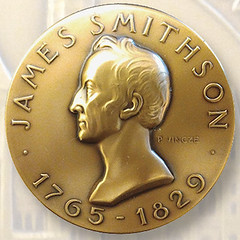 Four accomplished musicians and performing artists were recognized Dec. 8 by the Smithsonian Institution's National Museum of American History with the museum's James Smithson Bicentennial Medal.
Four accomplished musicians and performing artists were recognized Dec. 8 by the Smithsonian Institution's National Museum of American History with the museum's James Smithson Bicentennial Medal.
The awards recognize the artists' contributions to the American experience through music and the culture-changing impact they have made to American sound.
To read the complete article, see:
Smithsonian honors artists with medals for contributions
(https://www.coinworld.com/news/us-coins/smithsonian-honors-artists-with-medals-for-contributions)
A Numismatic News article by Rich Giedroyc examines modern replicas being offered by the Italian State Mint and others. -Editor
Italy's Istituto Poligrafico e Zecca dello Stato or Italian State Mint recently announced the mint was releasing replicas of the Venetian 1472-minted silver 1-lira to mark the 550th anniversary of this, the first Italian lira denominated coin.
The coin is also known as a tron lira, having been named for the 68th Doge of Venice, Niccolò Tron, who authorized the coin. Tron was doge between 1471 and 1473. The coin proved to be popularly accepted in trade throughout Europe. The restrikes are being produced on an antique press similar to that which would have been used in 1472 at the Serenissima Mint.
While these replicas may be of interest to some collectors as well as to the general public, they could also open Pandora's Box for the Italian State Mint and other world mints to begin re-issuing coins from the past with sufficient accuracy for the coins to be challenging to differentiate from the originals.
To read the complete article, see:
Possibly Dangerous Modern Replicas
(https://www.numismaticnews.net/world-coins/possibly-dangerous-modern-replicas)
HAPPY NEW YEAR CARDS
Pete Smith shared these images of Happy New Year cards with coin themes. -Editor
Here are a few others we've featured in the past, from Tom Kays and David Powell. Thanks everyone - here's to a great 2023. -Editor

